Mazda CX-60 review and buyer’s guide
The CX-60 combines performance, batteries and SUV-luxury to beat Lexus, Mercedes and BMW while Mazda refuses to go fully electric in favour of big inline six-cylinder engines. If your family needs lots of legroom, a big boot, and grunt, the CX-60 needs to go on your shortlist.
The Mazda CX-60 is a five-seat medium SUV with an impressive level of luxury designed to lure you away from the established prestige brands when buying your next midsize family transport.
Mazda’s new SUV line-up aims to competes against 27 other luxury midsize SUVs from the luxury giants like Mercedes-Benz, BMW and Audi (among others).
But the CX-60 also risks spreading Mazda’s resources too thin: Can it continue to compete against mainstream brands like Toyota, Hyundai, Kia and Mitsubishi while also going wrestling with the stalwarts of mass-market opulence?
CX-60 sits between the CX-5 and CX-9. It’s bigger, better equipped, more comfortable and more expensive than the CX-5, but is also slightly smaller and cheaper than the CX-70 (which is literally a five-seat CX-90), and there is also the CX-80 which is a seven-seat version of this. Following?
This is part of the problem Mazda might be creating for itself. By putting models in the prestige market segment, having been a mainstream brand for so long, Mazda will (no doubt) be working at distinguishing the CX-60, -70, -80 and -90 from the CX-5 and CX-9 mass-market model it has sold previously against things like Outlander and Pajero Sport, Sportage and Sorento, Tucson and Santa Fe, the Forester and Outback, and of course the RAV4 and Kluger.
So at this point, make sure you’re either shopping for a mainstream (more notionally affordable) five-seat SUV, or indeed a prestige five-seater like the Lexus RX, the Mercedes GLC, Audi Q5 or BMW X3 - because the latter group are the main rivals for the CX-60.
So should it be on your shortlist? Download the official Mazda CX-60 brochure here >>
The CX-60 has been launched as a more premium CX-5, while remaining in the mid-size SUV class, and in five-seat configuration only, costing between $57,000 and roughly $74,600. The maximum you’ll pay for a brand new CX-5 is about $53,000.
Officially, it competes in the premium mid-size SUV class with vehicles such as the BMW X3 and Genesis GV70. Right now, it is the only Mazda that sits in a premium segment, according to the Federal Chamber of Automotive Industries anyway.
It brings in a number of firsts for Mazda in Australia, including a brand new ‘large product group’ platform, which incorporates a longitudinal engine configuration (more on that later) and some interesting new inline-six engines. It also debuts a 2.5-litre four-cylinder plug-in hybrid option.
The bigger first is however, that Mazda, to this point, has been the brand known for offering one of the most luxurious vehicles among the mainstream brands. Up against a RAV4, the CX-5 feels like a commoner’s Lexus. The Mazda3 feels like a half-price Mercedes A-Class. Next to something like a Mitsubishi or a Subaru, Mazda has looked, felt and driven like the most premium choice among its competitors.
But now, the CX-60 is going in to compete with Big Luxury. To today, Lexus is the only brand that has successfully pulled off this financially dangerous stunt, which took about 25 years. Genesis (part of the Hyundai Group) is still trying to stick the landing, some 10 years on.
So far, the CX-60 is off to a very good first full year on sale in Australia, a nation that overwhelmingly loves medium and large SUVs and dual-cab utes. Here’s how the newcomer is fairing against the more established options you might also have on your shortlist.
Medium SUVs over $60K
This is the kind of graph that should worry sales executives at Lexus, BMW, Mercedes and Audi. The CX-60 has been on sale less than two years and it’s already outselling the X3, GLC and Q5, with the Lexus NX only a nose ahead.
The German big-three sales volume is being eroded by the likes of CX-60, with better availability for onshore parts (when you take it in for servicing), the customer care and technical support will be better, and your resale value will be better at the end of your intended ownership period - generally speaking.
FEATURES AND PRICING
It’s a great lineup, spanning between three main engines and three trim levels (Evolve, GT, Azami). And all are completely interchangeable. In other words, you can get the flagship plug-in hybrid (PHEV) engine in base Evolve trim, or get the entry 3.3-litre turbo-petrol inline-six with the top-spec Azami trim.
Image: Mazda Australia website
This is quite thoughtful of Mazda because it doesn’t matter what end of the market you’re in, you can mix and match packages to suit your needs and budget. The mid-level GT could be the obvious pick, from a glance, with somewhat attainable pricing (remembering it is a premium vehicle, apparently) and a good level of features.
In each model grade, the first letter denotes the powertrain, so ‘G’ stands for ‘gasoline’, the ‘D’ stands for ‘diesel’ and the ‘P’ denotes ‘plug-in hybrid’.
CX-60 PURE | petrol: $54,000 driveaway approx. | diesel: $56,000 driveaway approx.
DRIVING
Smart Brake Support (SBS) with Turn-across traffic
Blind Spot Monitoring (BSM) with Vehicle Exit Warning
Exterior mirrors with electric adjustment, auto fold, heating and auto dimming
Front & rear parking sensors
TECH
10.25-inch LCD infotainment screen display (incl. Mazda Connect) with rotary dial selector
12.3-inch LCD driver’s display
18-inch grey metallic alloy wheels
360-degree view monitor
7-inch TFT LCD multi-information meter display (6-cylinder)
8 speaker audio with DAB+
Apple CarPlay and Android Auto (wireless and USB)
Satellite navigation
Auto-dimming rear-view mirror
EXTERIOR
LED headlamps with auto on/off and High Beam Control (HBC)
Rear console with USB-C and 150W AC outlet
Rear power outlet socket with 1,500W AC (PHEV)
INTERIOR
Black cloth seat trim with 8-way manual driver's seat adjustment
Dual-zone climate control with rear vents
Leather shift knob
Leather steering wheel
CX-60 EVOLVE | petrol: $57,000 driveaway approx. | diesel: $59,000 driveaway approx.
adds:
DRIVING
Front & Rear parking sensors
8-way manual driver’s seat adjustment
Blindspot monitoring (BSM) with door-exit alert
Auto-dimming rear-view mirror
TECH
Head-up display
7-inch LCD driver’s display; (12.3-inch for the PHEV)
Wireless phone charger
360-degree camera system
Satellite navigation
Apple Carplay and Android Auto (wireless and USB)
EXTERIOR
18-inch grey metallic alloy wheels (space saver spare)
Door mirrors: electric adjustment, auto folding, heated and auto dimming
Remote operated power tailgate (open/close)
LED headlamps with auto on/off and High Beam Control (HBC)
Advanced keyless entry
INTERIOR
Cargo net
Premium black Maztex cloth trim
Overhead console with sunglass holder
Rear console with USB-C and 150W AC outlet (PHEV: rear power outlet socket with 1,500W AC)
Dual-zone climate control with rear vents
Auto emergency braking incl. junction cross-traffic
Manual steering wheel rake/reach adjustment
Leather: shift knob, steering wheel
CX-60 GT | petrol: $65,000 driveaway approx. | diesel: $67,000 driveaway approx.
adds:
EXTERIOR
LED headlamps with dark signature
Panoramic sunroof
20-inch black metallic alloy wheels (space saver spare)
Rear combination lights with signature illumination
TECH
12.25-inch LCD infotainment screen with rotary dial selector
Personalise system (auto restoration of settings)
Driver monitor
INTERIOR
Premium Bose 12-speaker sound system with amplifier
Electric steering wheel adjustment
Door mirror position pre-sets
Hands-free remote operated power tailgate (open/close)
Heated steering wheel
Leather seats with driver and front-passenger electric adjustment (driver & passenger), plus driver position pre-set
Heated seats (front driver & passenger, outboard row 2 seats)
Rear console with LED lamp
CX-60 AZAMI | petrol: $74,660 driveaway approx. | diesel: $76,880 driveaway approx.
TECH
360-degree camera with see-through view
Cruising & Traffic Support (CTS)
Personalise system with ‘Easy Entry & Driving’ position guide
EXTERIOR
Adaptive LED Headlamps (ALH)
Foot lamp
20-inch black metallic/machined alloy wheels (space saver spare)
INTERIOR
Black Nappa leather seat trim
Frameless interior mirror
Ventilated (cooled) front seats
Leather side door trim with courtesy lamp
INTERIOR
No matter which one you go for, all come with a wide-screen multimedia display (10.25 inches in Evolve, 12.3 inches on GT and Azami) incorporating the company’s traditional Mazda Connect operating system, supporting both Android Auto and Apple CarPlay.
It’s an easy system to operate, with simple four-axis scrolling and page swipes, and you can use the handy dial on the console to navigate your way around while keeping your eyes on the road.
A 7.0-inch TFT display provides all of the driver information, except on the PHEV models Mazda upgrades to a 12.3-inch cluster display. This is likely due to the hybrid needing more display area to exhibit various powertrain information, such as battery level and recharging status and so on.
Being a premium model, it’s good to know typically premium creature comforts are not omitted, such as leather and suede-like trim, LED headlights, and dual-zone climate control – all standard kit on all models. But, you’ll find the CX-60 also comes standard with plenty of extra frills that are often optional extras on the premium European rivals.
A 360-degree parking camera, for example, comes standard on all. I think it's an important innovation as it provides a clear and complete view of your surroundings. This is perfect for busy family lifestyles, as you can keep an eye on not just the kids playing around the driveway but also their miscellaneous equipment that’s inevitably scattered around the home.
Other highlights? A powered tailgate, 150W AC power socket in the back seat area with an Australian outlet plug type (yep, as standard), and some advanced safety assist systems such as turn-across traffic alert, and automatic high-beam assist which is ideal if you regularly drive on country roads at night.
Stepping up to the GT adds the bigger 12.3-inch media screen, but also some proper luxury items like power steering column adjustment with heating for the wheel, a big sunroof, 20-inch wheels, and heated front and rear seats.
At the top end, the Azami adds Nappa leather, fully adaptive cruise control, cooling front seats, and unique 20-inch wheels and front bumper bar styling. Unless you live next door to the Jones’, there is no major reason you'd need to go for the Azami in my opinion.
Mazda is offering a number of optional packs with the CX-60. This is very much in sync with what the common European luxury brands do. There’s the SP pack that adds fashionable dark highlights for the body, and the Luxury pack that includes heated front seats and a luxury trim (for Evolve only), and then the Takumi pack which is also perfect for showing off to those pesky Jones’.
In all honesty though, the Takumi pack does introduce some awesome white Maple wood highlights and white Nappa leather, as well as a rather exquisite cloth dash featuring exposed ‘Kakenui’ stitching. It’s really quite nice.
On the subject of luxury, just be aware that you’ll pay Luxury Car Tax on a CX-60, as you would any Lexus, BMW, Genesis et al.
ENGINE
Mazda has done the complete opposite to what most manufacturers are doing at the moment; launching some big-capacity combustion engines. And very interesting ones at that. A 3.3-litre inline-six, all-new, is available in petrol or diesel form, both turbocharged.
That’s a pretty big six-cylinder by today’s standards. Even the German brands peak at around 3.0 litres. This is actually quite typical of Mazda to offer reasonably big-capacity units. For instance, the existing 2.5-litre four-cylinder is much bigger than the field of 2.0-litre units out there.
Click here if you want to understand why inline sixes are so perfect >> in a technical sense.
The facts and figures on these new engines are very appealing. In diesel form, called the D50e, the new unit develops 187kW and 550Nm. Performance is very respectable, especially with all of that torque, but fuel economy is outstanding.
Mazda says the diesel offers the lowest official consumption average of any other vehicle in its class (excluding hybrids), with a rating of just 4.9L/100km. That’s incredible for this size engine and for its outputs - and we have the nature of it being a more energy-dense hydrocarbon fuel to thank for that. (It’s why diesel fuel isn’t going away in Australia >>)
The petrol version, called the G40e, develops a punchier 209kW and 450Nm. Fuel consumption is reasonably low, considering the engine size and power, with an official rating of 7.4L/100km. For some perspective, the BMW X3 M40i in the same class, albeit much more powerful (285kW) is rated at 8.9L/100km. And that’s an efficient package.
If keeping your outright fuel bills as low as possible is a primary goal, then you need to take a look at the PHEV. Pairing the company’s 2.5-litre four-cylinder with an electric motor assist system results in an impressive 241kW and an official consumption rating of just 2.1L/100km. So how does that compared to other PHEVs in the market?
Mazda has given CX-60 a 17.8kWh battery, which is 12 per cent smaller than the Mitsubishi Outlander PHEV and therefore offers less range, because battery size is proportional to motive power and available distance.
Outlander PHEV has a rather large 20kWh battery pack on board, sandwiched down below beside the 56-litre fuel tank.The conventional petrol-only variants are all happy to take 91 RON whereas the CX-60 PHEV takes 95 RON premium petrol.
The Outlander’s battery is connected to two motors, one at the front putting out a maximum 85kW and one at the rear doing a maximum of 100kW. So all up, including the 98kW from its 2.4 petrol engine, you’re getting a total 185kW of peak power and it takes about 10 hours to charge from de facto empty (26 per cent state of charge) to full.
So the CX-60 is relying much more heavily on its more powerful four-cylinder combustion engine for its performance edge over the Outlander’s bigger battery.
The power-to-weight ratios of each tell an interesting story. Outlander PHEV Exceed Touring: 86 kW/t. CX-60 Azami: 120 kW/t. Why? Well, Outlander PHEV does weigh more thanks to its row 3 seating and bigger battery, but only 6kg more. It has to do with the way their engines are designed and tuned.
The real performance gulf between CX-60 and Outlander PHEVs is the use of direct injection in the Mazda versus multi-point injection in the Mitsubishi. Multi-point is an engineering hack to improve fuel economy where DI is optimised for performance. The Outlander quotes 1.5 litres per 100km on the combined fuel test cycle, where Mazda cites 2.5L. Same goes for the emissions: 49 grams per kilometre to the Mazda, 35 to the Mitsubishi.
Kia Sorento PHEV also uses multi-point injection with its 1.6 turbo-petrol powertrain for a combined 195kW peak power. The CX-60 PHEV produces 30 per cent more power than the Outlander, and 23 per cent more than the Sorento.
This is where Mazda has taken a different path to ‘going hybrid’. The CX-60 will do 0-100km/h in, according to Mazda, 5.8 seconds.
There is a fourth engine choice on the CX-60 and it’s in the form of a 2.5-litre non-turbo petrol 4-cylinder which makes 138kW of peak power at 6000 RPM and 250Nm of peak torque at 3000 revs, and using an 8-speed epicyclic automatic transmission.
This 4-cylinder 2.5 is meant to be a price leader to open the range up to smaller budgets and certainly this engine will be sufficient, but it won’t blow your socks off. But that’s okay if what you’re looking for is adequate performance and that functional, spacious and sumptuous cabin.
But you can only have the 2.5 with the first three model grades of CX-60. That is, the ‘Pure’, the ‘Evolve’ and the ‘Touring’. You cna have the 3.3 petrol/diesel in any of these lower grades, as well as the plug-in hybrid, but you can’t have the ‘poverty pack’ engine with the GT or Azami.
Ultimately, it’s the diesel that is the pick of these four powertrain choices because it’s only a couple of grand more for a significant jump in performance that makes overtaking, big hills and steep driveways close to effortless. This is especially important if your family does holiday roadtrips with lots of bags and people and stuff, possibly even with some light towing involved.
The plug-in hybrid is monstrously powerful, but you need to be vigilant with charging that battery in order for it to do some work, but at an $11,000-13,000 price premium, it’s not exactly a bargain. And the 3.3 petrol engine is the socks-blowing-off option if you enjoy spirited driving, but beware the irrational, however seductive - because you will pay for that fun, at the bowser.
DRIVING
So, the reason for the new large product platform is to accommodate the inline-six engines. Although Mazda likes to say the chassis is designed with rear-wheel drive characteristics in mind, in reality, straight six engines simply only work if they are mounted longways (although there have been some front-wheel drive inline-sixes in the past).
Think of it this way; if you can buy a big house then you’ll often get a big block of land that comes with it. You're winning, no matter which came first.
With a ‘RWD’ style of powertrain orientation it means the driving dynamics are very nice. It steers with the sensation of being pushed along from behind rather than scampering and pulled from the front.
The grunt from the diesel is surprisingly brutal, but not rough or aggressive. Quite the opposite - it’s silky smooth. Wonderfully linear. And flicking it into ‘Sport’ does make the gearchanges, throttle sensitivity and exhaust noticeably more responsive.
Mazda has no right making a diesel this good to drive at seven tenths.
Conventional mid-size SUVs are not usually known for supporting spirited driving sessions, but the CX-60 seems to enjoy making turns and certainly provides superior driving dynamics over the CX-5, CX-8 and CX-9.
The ride comfort is soft compared with some European rivals, but the breadth of suspension stroke seems to work well on our crappy backroads. There is some minor body roll as a result.
(Jumping into the PHEV, it's easy to notice the extra weight (about 150kg) and it does impact the ride slightly. It can crash and boom a bit on poorly-maintained surfaces, more than the other engine options - but it’s never harsh in a way that would write it off to most car buyers.)
That term ‘most car buyers’ is important when addressing the recent update Mazda has made to the ride and handling of CX-60. There was plenty of motoring media attention focused on caning the CX-60’s rear suspension, in particular, for the way it was supposedly ‘too stiff’ in the rear and counter-intuitively ‘too soft’ at the front.
What the majority of motoring journalists will struggle to explain is that carmakers cannot just change a vehicle in any fundamental way as they see fit, once the primary R&D is complete. That’s because the ‘hardpoints’, i.e. where the chassis meets the suspension, essentially, cannot be changed. The only major change they can make is to fit new springs and dampers, which is generally effectively, but it’s not fundamental.
Mazda has changed the springs and dampers on CX-60 from its first iteration, and made this component change to all vehicles sold since launch, meaning the one you buy today, whether it’s new or second-hand, will have that suspension revision.
The result is a rear-drive straight-six that feels much more compliant over harsher sealed roads, while absorbing the Goldilocks amount of load. But the difference is only really going to be the kind motoring journalists might presume they can feel, and which ride & handling engineers obsess over as their day job.
The majority of buyers would probably never notice the change, even if they drove the old setup back-to-back with the uprated spring and damper package.
The worst the ride ever gets is on those raised platform-type speed humps where the whole vehicle is forced to step up onto the elevated platform, and then step down. On these speed humps the dampers have barely finished recovering from the first before being dropped on the second. But it’s not harsh, more like irksome - tolerable, is another way to put it.
Mazda says they’ve also “recalibrated the steering” which is a fairly vague way to tell you they, most probably, made it slightly weightier to turn-in at higher speeds, and slightly lighter at low speeds. What this means is the servo in the electric steering is ‘weighted’ better in those driving scenarios; as in, more resistant at higher speeds, and less resistant at lower speeds. This is the most common type of steering recalibration.
Although, Japanese carmakers, generally Lexus and Toyota, will skew more toward light steering at low speeds, which, historically, tends to feel ‘numb’ when you’re navigating streets and carparks, meaning it can be hard to sometimes judge how far the wheels have turned. But CX-60 doesn’t have this issue; it’s actually quite nice to use in low-speed manoeuvres, without feeling too heavy or too light.
All you need to know as a consumer, is that the CX-60 feels as close to a BMW X3 as Mazda can affordably make it, without defeating the purpose of trying to undercut the German brands on price. For most people, the CX-60 is going to feel very responsive and remarkably agile for what seems like a large SUV, but is in fact only fractionally longer and wider than a current (outgoing) CX-5.
I'll help you save thousands on a new Mazda CX-60 here
Just fill in this form.
No more car dealership rip-offs.
Greater transparency.
Less stress.
SAFETY
The CX-60 received a five-star ANCAP safety rating based on data gathered by EuroNCAP in its 2022 testing. You can download the full CX-60 technical scorecard here >>
The CX-60 got mostly very high scores in all testing criteria, including 91 per cent for the primary adult occupant protection category, and 93 per cent for child occupant protection.
As with most medium to large vehicles these days, the CX-60 scored excellent marks on the side-impact tests including the oblique pole, the 50km/h side impact test, and the far side impact test.
The primary area of points deduction for the CX-60 was in the driver’s chest and legs in the frontal offset test at 50km/h. Obviously the occupant survives, but the level of injury is perhaps higher than would be ideal from a notionally safer vehicle that is roughly 500kg heavier than the 1400kg mobile barrier trolley. (Weight has a causal influence to the resulting crash test because: physics.)
CX-60 was marked down a three single points, one for ‘variable contact’, one for ‘concentrated load’, and one for ‘incorrect airbag deployment, due to the knee airbag failing to deploy in a uniform way and only partially opened.
Carmakers often get small mark-downs for minor things like this all the time, and it actually relates to a pedal deflection of more than 80mm. Essentially, one of the pedals moved upwards by more than 80mm it’s not the kind of offense that would render a CX-60 a deathtrap. It’s certainly not in the same league of terrible as a Jeep Wrangler, for instance.
The rest of the CX-60’s wrap sheet is quite impressive.
In child protection category, all child restraints fit perfectly into Mazda’s highly functional back seats which get dedicated and robust plastic outboard ISOFix points, with their matching top tethers that include one in the centre seat.
Child occupants in CX-60’s testing regime all scored full marks in the primary destructive crash tests.
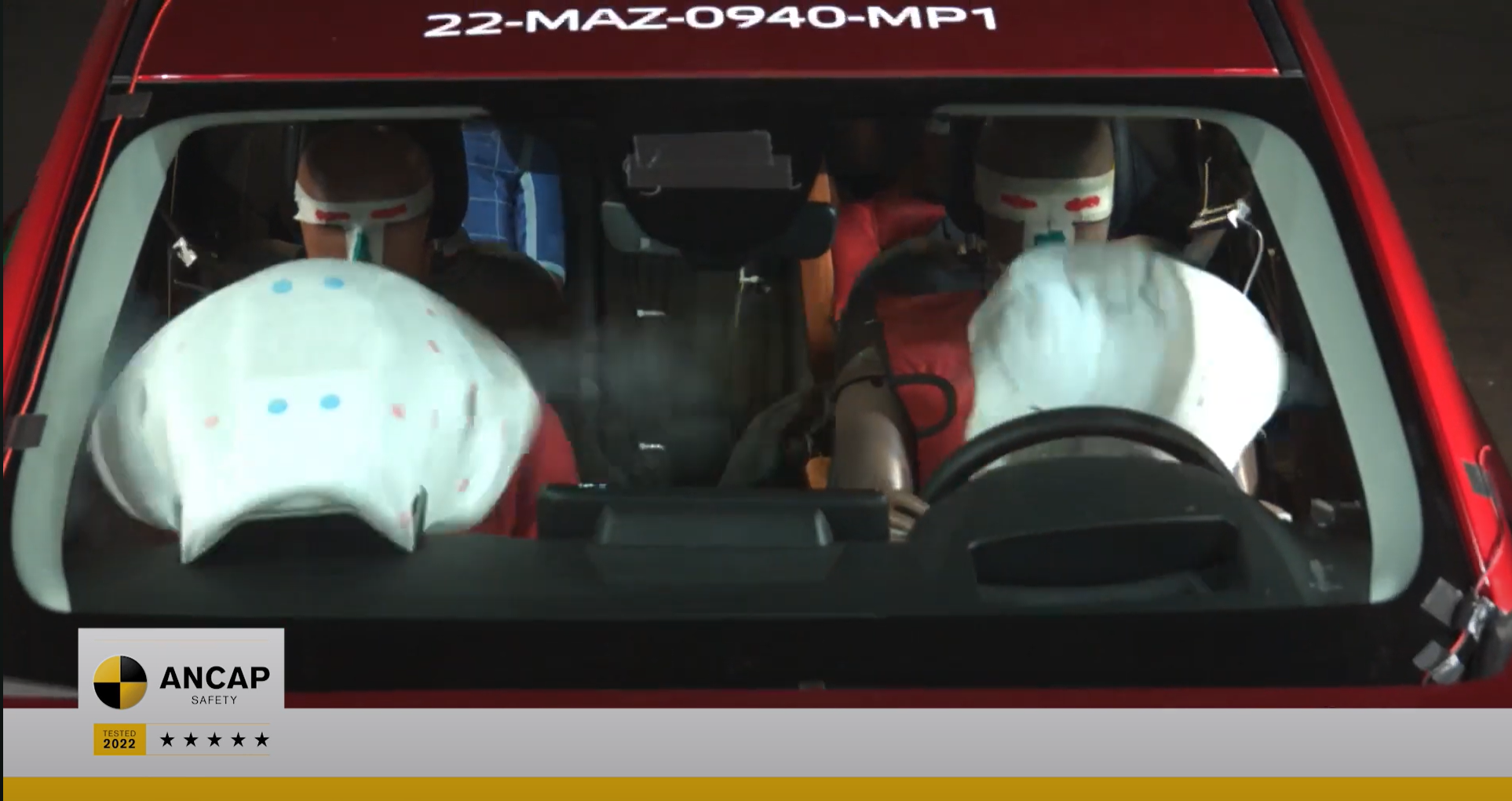
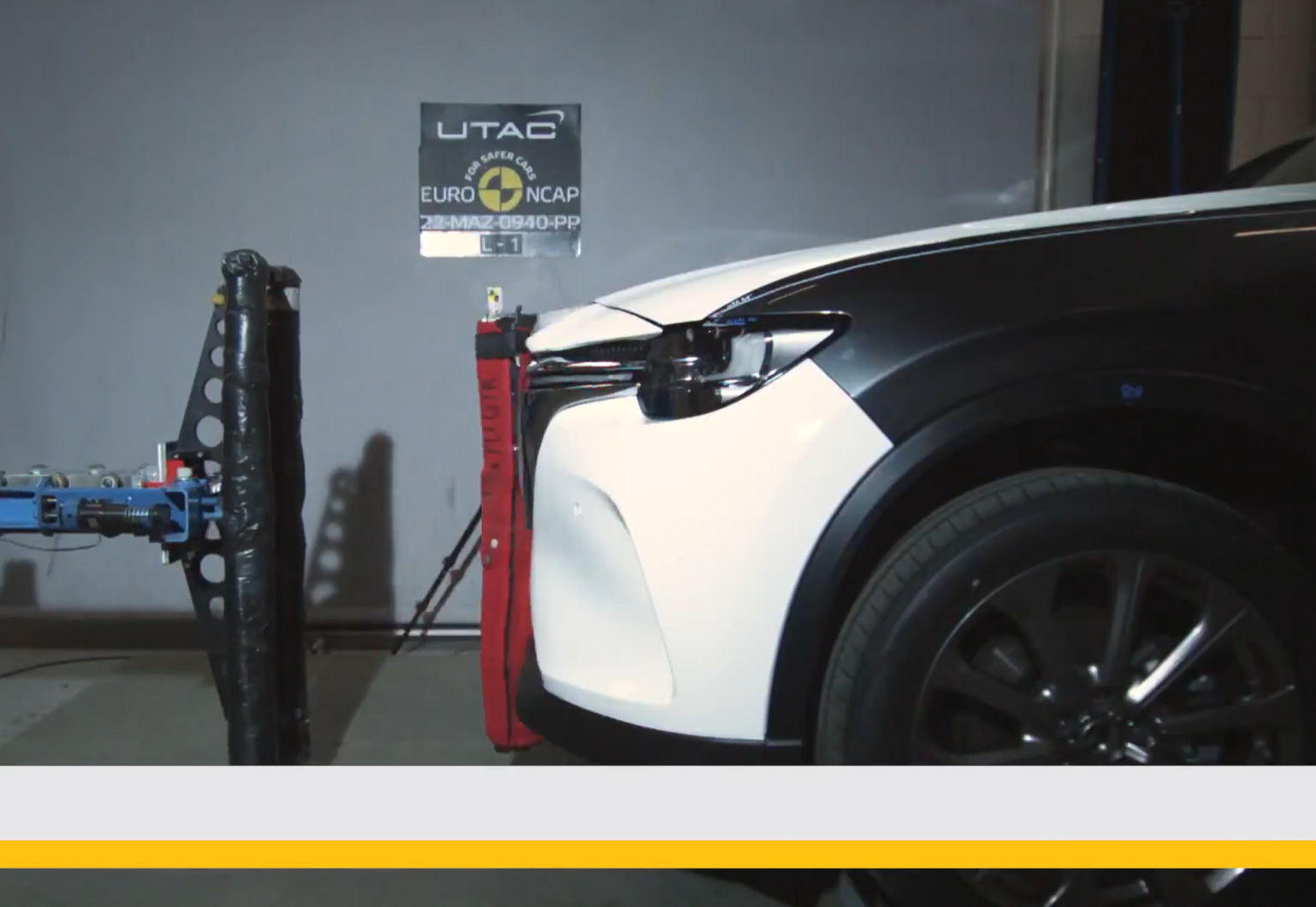
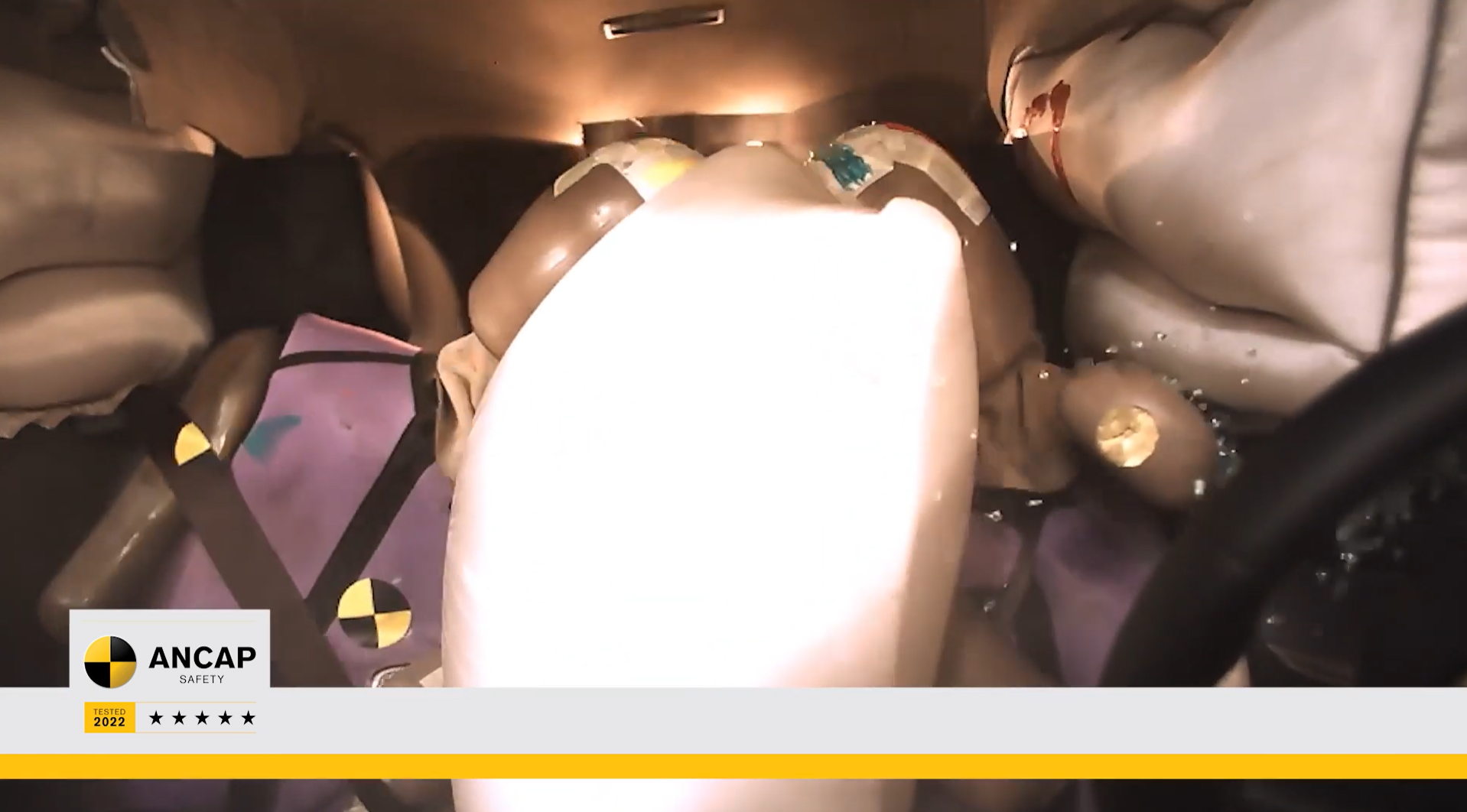
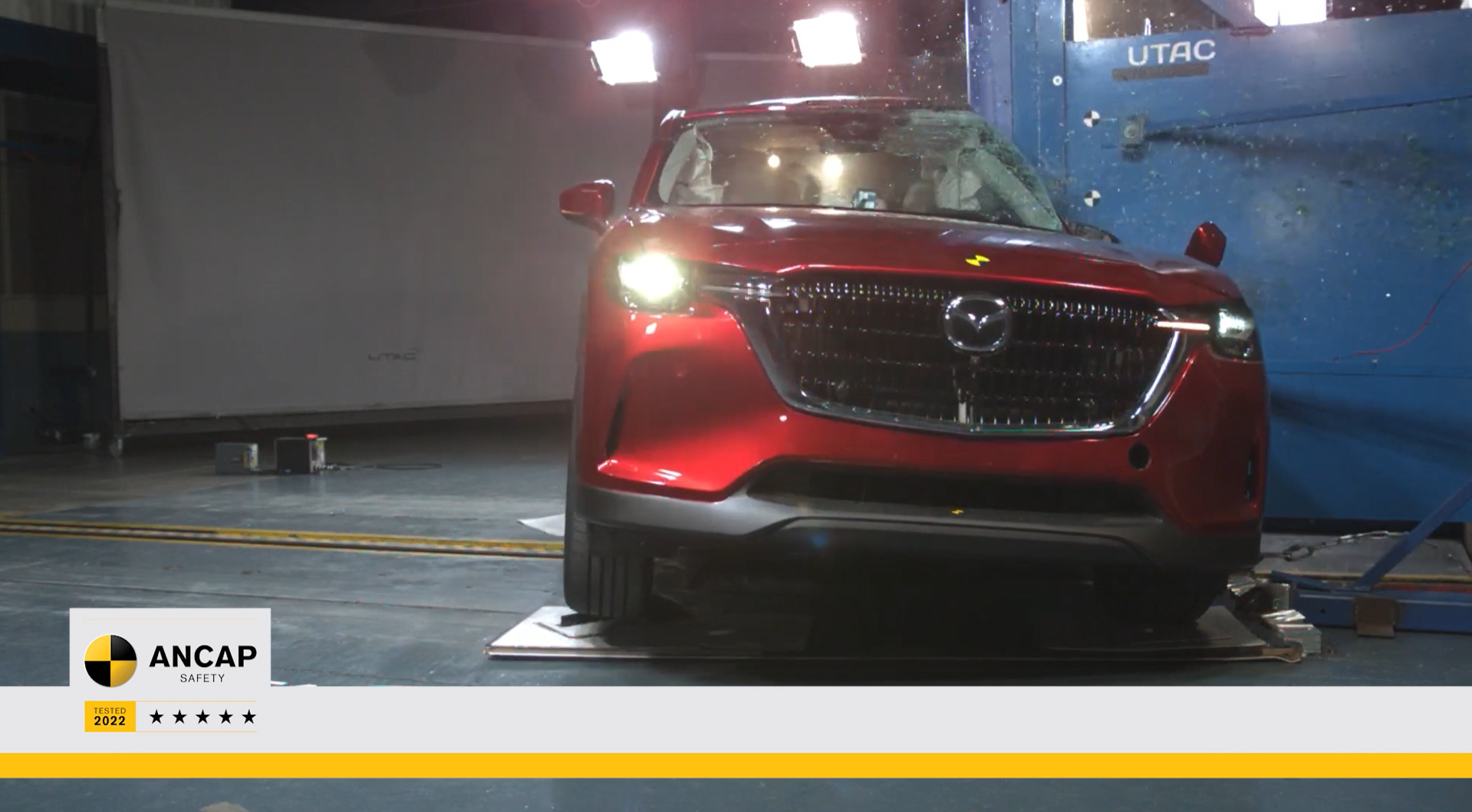

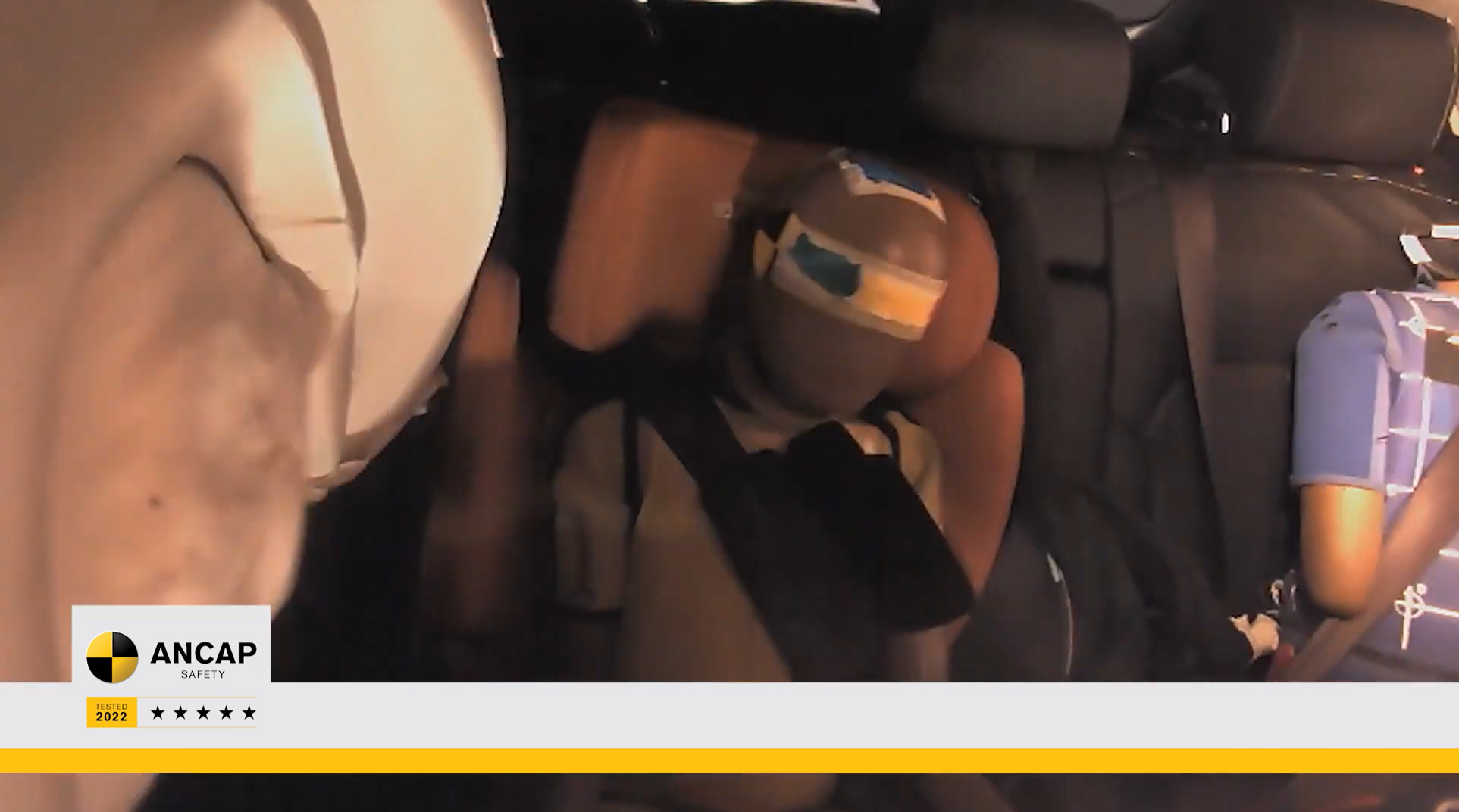
TOWING
The CX-60 gets a maximum towing capacity of 2000kg with a 150kg towball download limit. That’s fairly decent.
Compared with the 100kg towball limit imposed on the Hyundai Santa Fe hybrid with its 1650kg capacity, that’s a 7.5 per cent load borne by the Mazda, whereas the Santa Fe only bears 6 per cent.
In the previous generation diesel Santa Fe, 2500kg was the potential towing capacity with 200kg of towball download. What the Hyundai has lost, Mazda has gained with its new range of diesel straight-six powered family SUVs.
DRAWBACKS
This is Mazda’s first crack at a proper plug-in hybrid.
They did a mediocre job on their so-called ‘mild’ hybrid back in 2020, and mild was an overstatement, but only because the marketing department got a bit self-indulgent. It was nice to see Mazda’s engineers actually innovating in things like the SkyActiv-X M hybrid powertrains, unlike the sulk-fest going on at Nissan these days. (FYI, Nissan’s ePower hybrid tech was a cynical gimmick as well, but went much harder on the marketing rhetoric.)
Mazda’s first crack at a hybrid was more like an alternator with a 24-volt battery, the kind of science experiment you expect Year 12 STEM students to know at an intimate level. There was no electrical contribution to the drivetrain, and it was done to the 2.0-litre engine, not the 2.5 which would’ve actually made performance gains for all the R&D pain.
Based on this slow start and the fact Hyundai, Kia, Mitsubishi, BMW, and even Mercedes have beaten Mazda to the plug-in punch, you might be inclined to think this late-to-the-party CX-60 will be some cynical marketing exercise wrapped in virtue.
Well, no. It’s actually a legitimately good set-up.
The concern for you should be how reliable is this vehicle and its new powertrains going to be.
To invest in a fairly large capacity inline six-cylinder engine program means Mazda is not betting its future on eco cars. It’s still classifying combustion, and diesel in particular, as a long-term financial viability. So have they done the the sufficient R&D to make the 3.3 inline six reliable?
This is where the waiting game should be played. Such a new powertrain, as we’ve learned from the LandCruiser 300, has the potential for either disastrous feedback once it enters the market, or small updates or remedies as the fleet racks up the kilometres in-service.
Having said that, recent history should indicate that Mazda did an excellent job with its 2.5-litre turbo petrol four-cylinder and naturally aspirated (non-turbo) SkyActiv engines in CX-9, CX-9 and CX-5. The 2.2-litre diesel did develop an oil dilution issue which was picked up, addressed and fixed in-service through service campaigns via the dealer network. It’s hard to see Mazda continue to pursue the benefits of a diesel if it hadn’t solved that dilution problem with this new 3.3 inline six diesel.
While Mazda is bouyed by a small percentage of Toyota ownership, it is not dominated by Toyota in the way Subaru has become, so it’s safe to say a lot of the beancounter-driven decisions at Mazda have not matasticised the way they have in products like Outback, Forester and WRX over the last five years.
What that means is Mazda has taken a bold and calculated decision to not only develop wholly new and profoundly desirable powertrains for the likes of CX-60, but also for use in other vehicles in the future - making a clear trajectory for the brand over the next 10 years.
It shows you that Mazda is innovating. It’s taking bold steps, it’s evolving and adapting, it’s refusing to be overrun by hyper-woke green virtues and recognises the legitimacy of having both a plug-in hybrid, and a diesel and petrol inline six. Diesel fuel offers 30 per cent more potential energy than the equivalent amount of petrol, which is why it’s ideal for use in bigger vehicles with heavier-duty applications. That’s not to dismiss the need to reduce emissions in built-up areas for the sake of human health, either.
This vehicle should also be a signpost to other carmakers, as well as consumers, that owning a so-called eco-car doesn’t necessarily have to be boring. The Outlander PHEV with its multi-point engine just doesn’t have the sparkle that Mazda’s direct-injection has when you give the long peddle a jab exiting a bend. You pay for that performance, unreservedly, but at least it’s an option if your budget stretches closer to $80K.
Why this is important is that it shows you the brand is not moping around the office like Nissan and pumping out fake all-new Pathfinders with dinosaur V6 petrol engines. Mazda is giving the market options, while also taking aim at the more prestige brands, knowing they also have the reliability to match their styling and technical developments.
I would strongly suggest waiting at least six months, preferably 12 months, for stock to hit the road and wait to see if any early technical gremlins show themselves in the CX-60, and then have a think about which powertrain, model grade and pricetag is going to suit your needs.
CONCLUSION
Despite great efforts from Mazda to introduce a plug-in hybrid in Australia, where electrified vehicles are usually not a priority at the production level, the PHEV setup is not as refined as some other systems currently on the market.
It’s a bit noisy and a bit clunky when transitioning between electric modes and petrol modes, and we’re a bit skeptical about its 2.1L/100km official rating. Keep in mind though these official averages are tested under strict conditions. Conditions that include driving journeys lasting no more than 20 minutes.
Since the PHEV can be driven on electric power alone for around 76km, a big chunk of that official testing procedure is going to be achieved under fully electric driving. Once the petrol engine kicks in, expect to see higher consumption rates in the real world.
The G40e does seem like a tempting option. Perhaps the most tempting. It sounds good and goes very well indeed. However, the D50e diesel really stands out with its strong torque and class-leading fuel economy. It is a bit noisy and rattly when cold but it soon warms up and quietens down.
With the diesel engine and in GT trim, you’ve got yourself a sound package. Interestingly, the diesel offers the lowest braked towing capacity of the trio, at 2000kg, against 2500kg in the G40e and PHEV (due to a higher kerb weight in the diesel).
The CX-60 is pitched as a premium alternative to the CX-5. It is basically for graduates of the CX-5 range who might be considering moving to a typical premium brand. Mazda is, no doubt, hoping to catch some of those buyers just before they walk out the door.
After a thorough inspection, it does present an excellent case. The build quality and refinement are equal to or at least close to the premium alternatives; the powertrain options are all very appealing and interesting in their own way; and the driving dynamics are at least on par with the entry-level rivals from Audi and Lexus.
If all of this sounds good to you, then yes, it could be the perfect fit. Keep in mind the CX-90 has launched in Australia under a similar philosophy and with almost identical engines, only in a large seven-seat format, as a more luxurious successor to the CX-9.

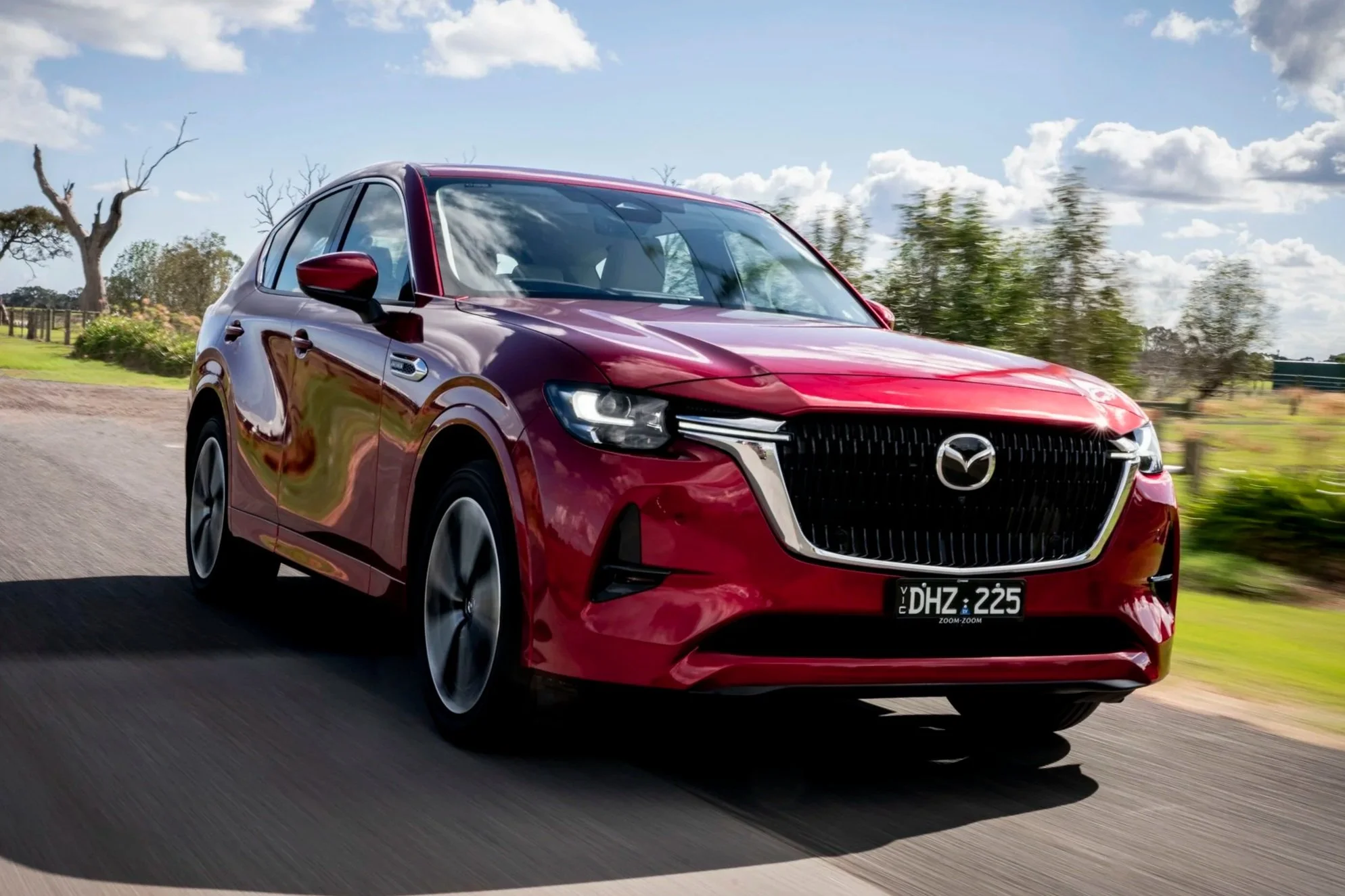
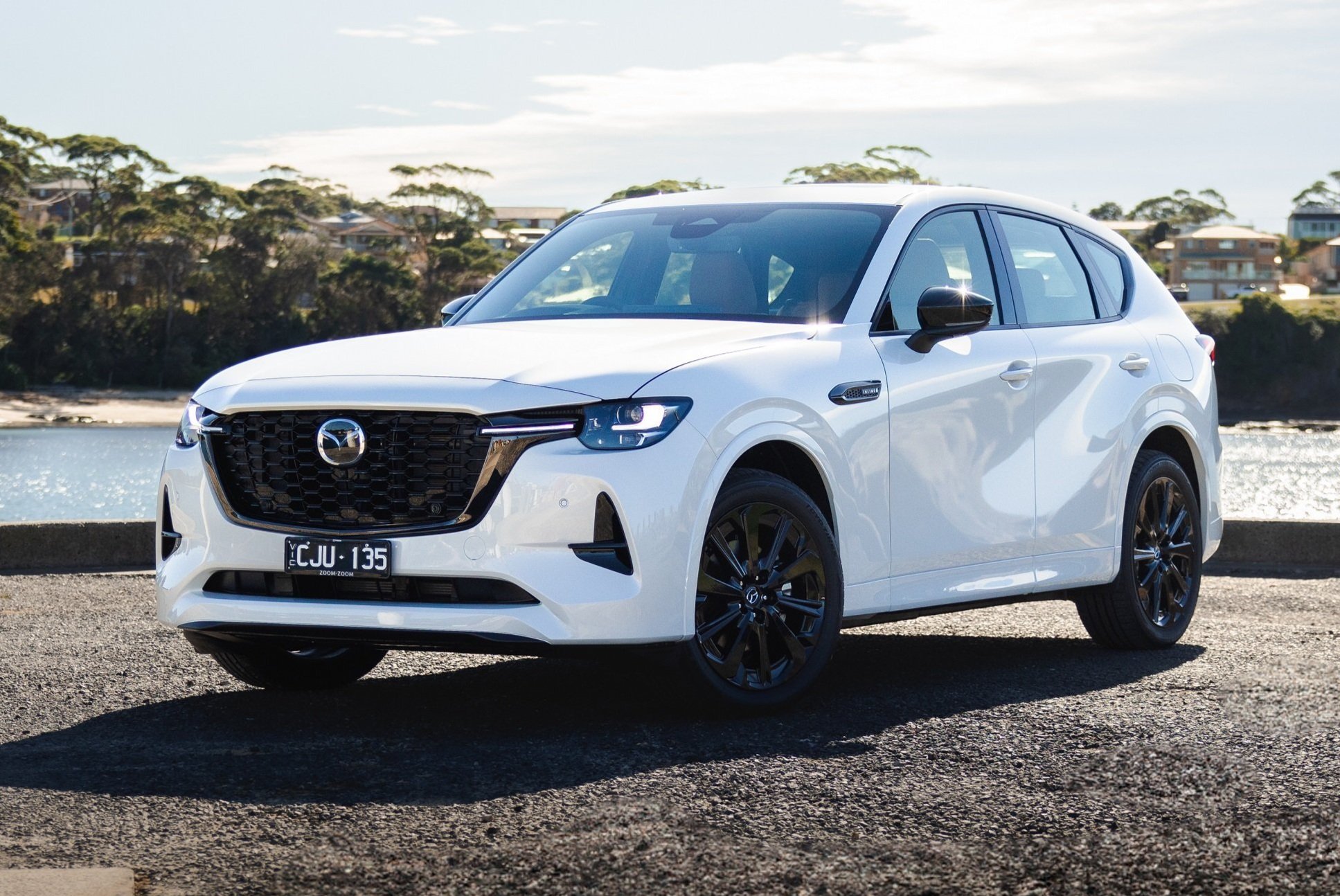
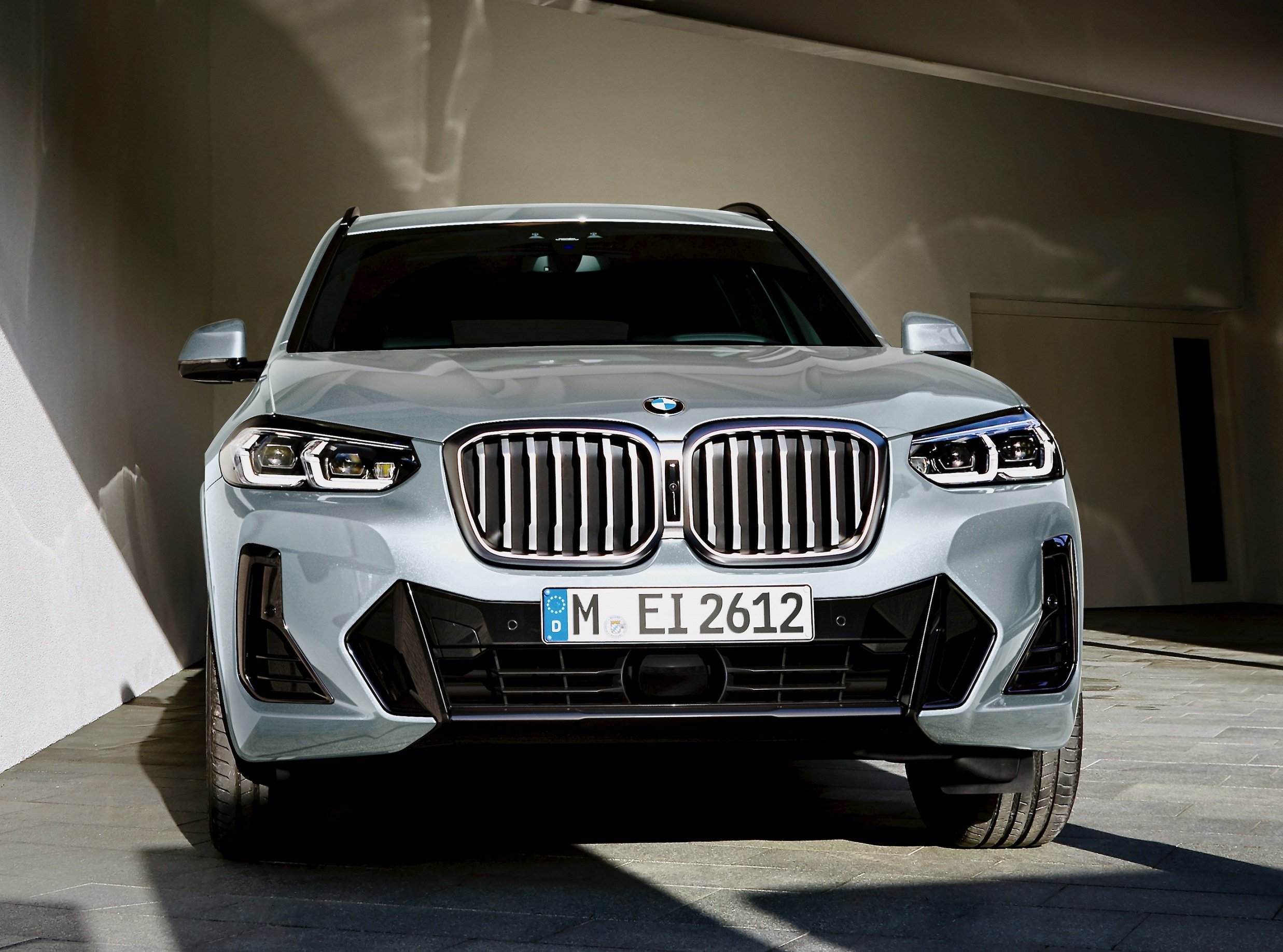


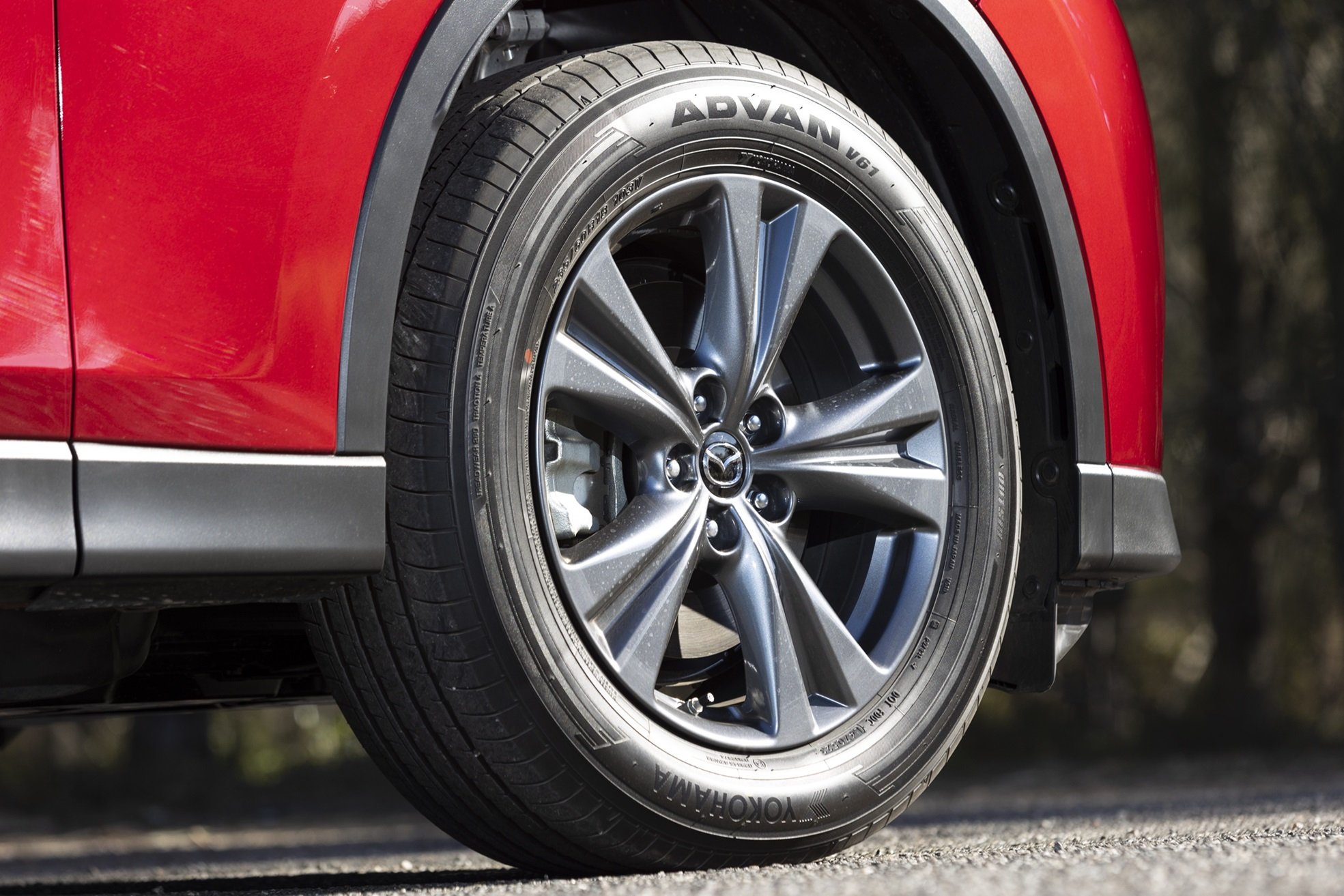
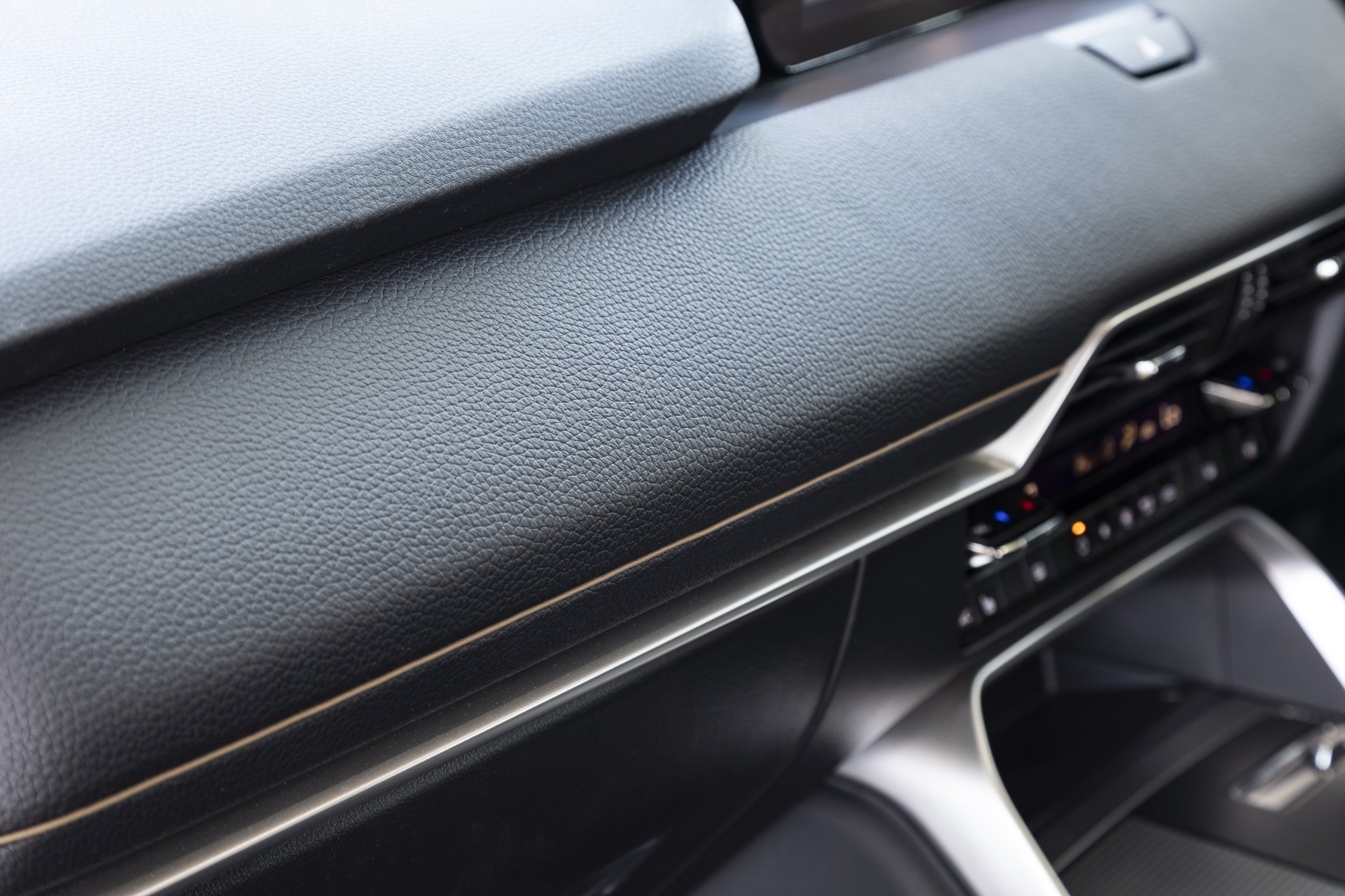
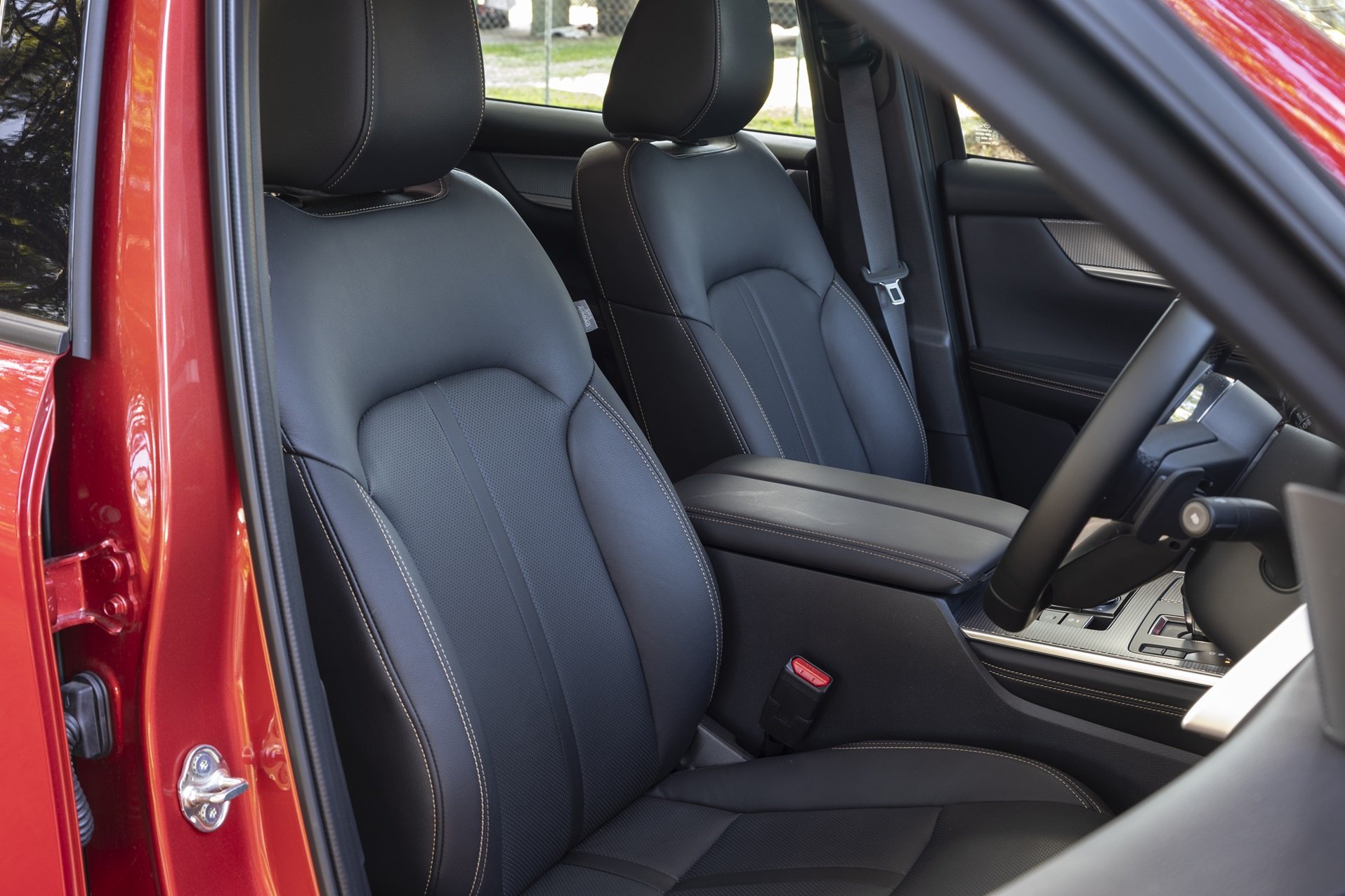
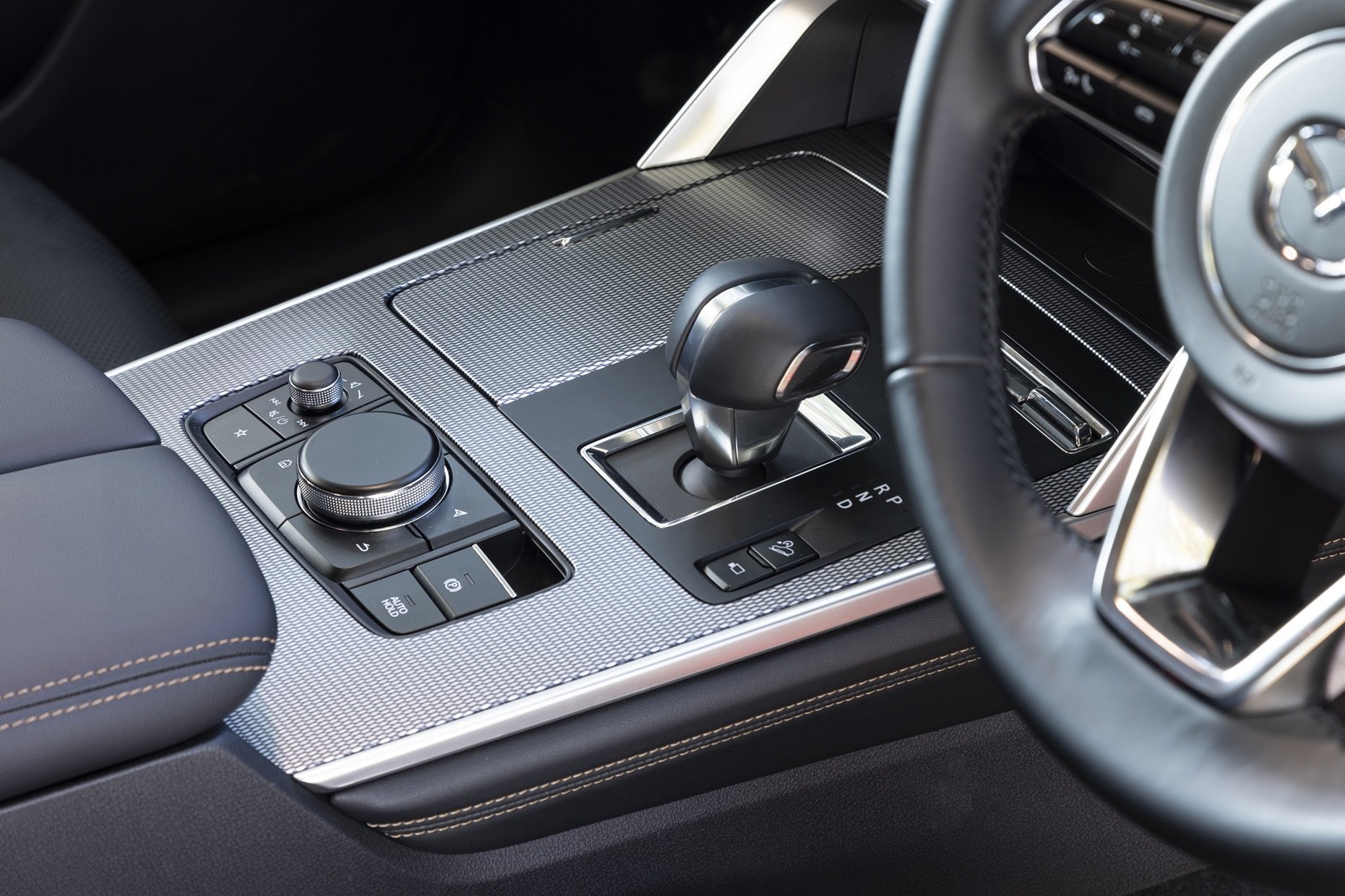
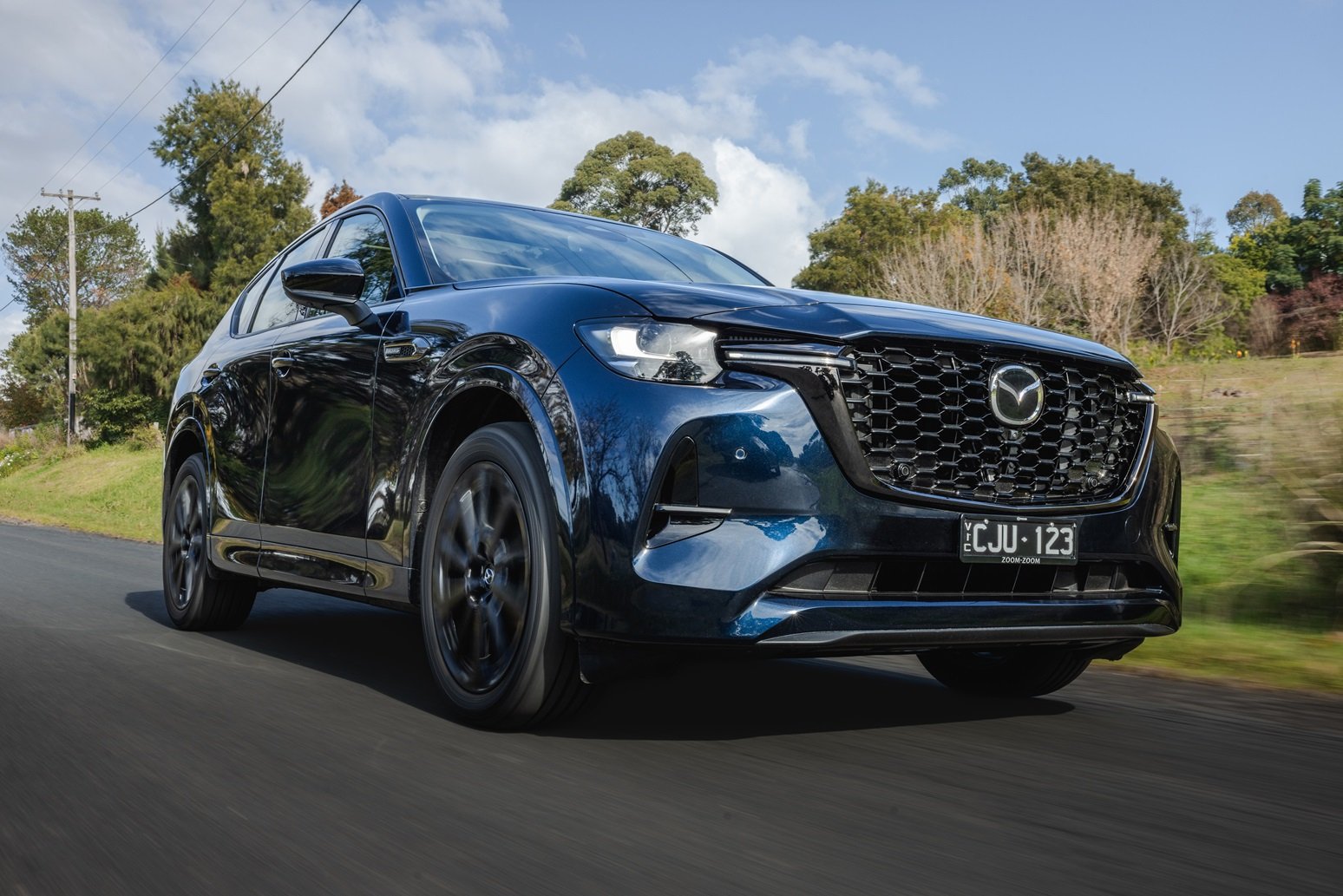
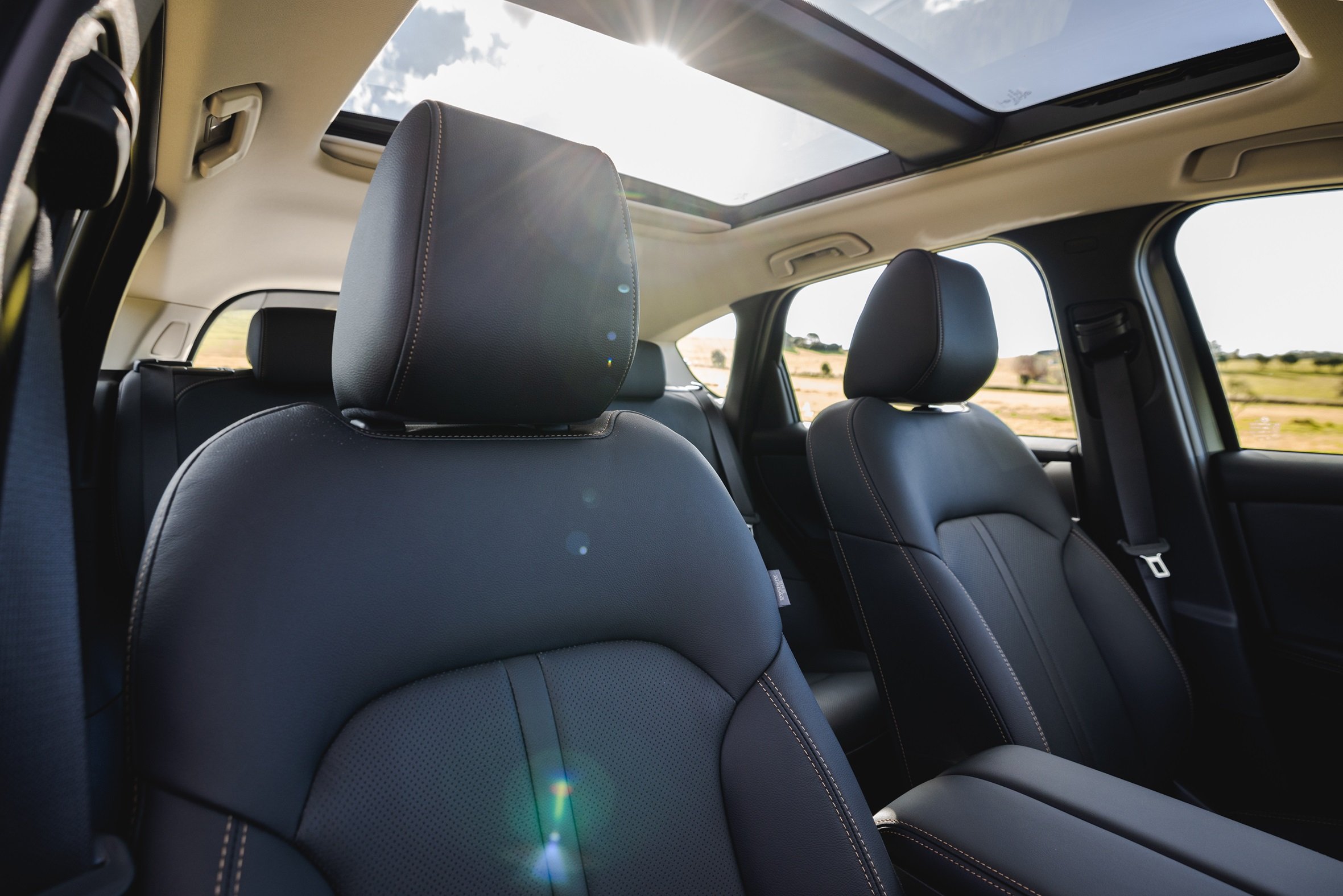
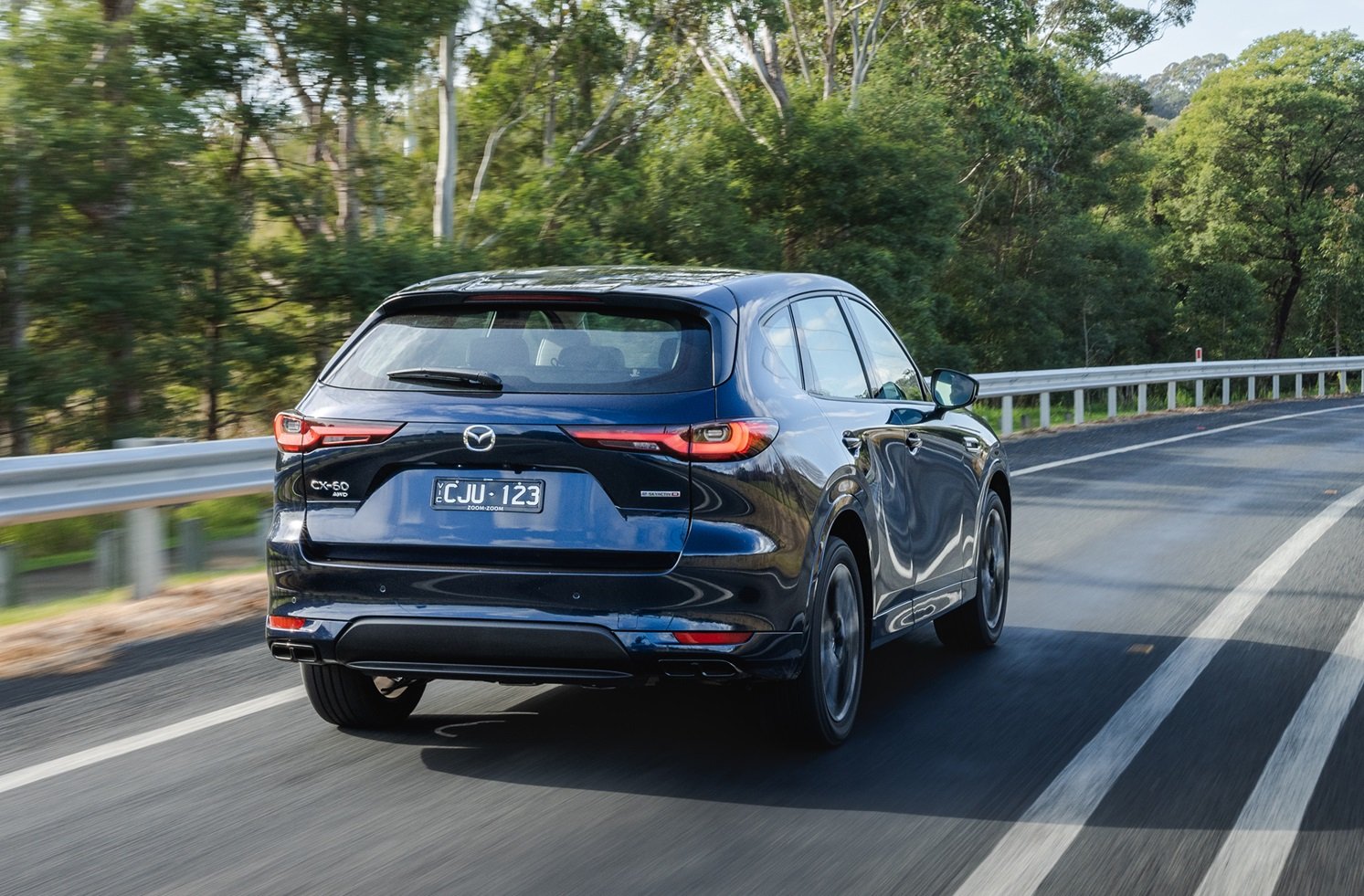
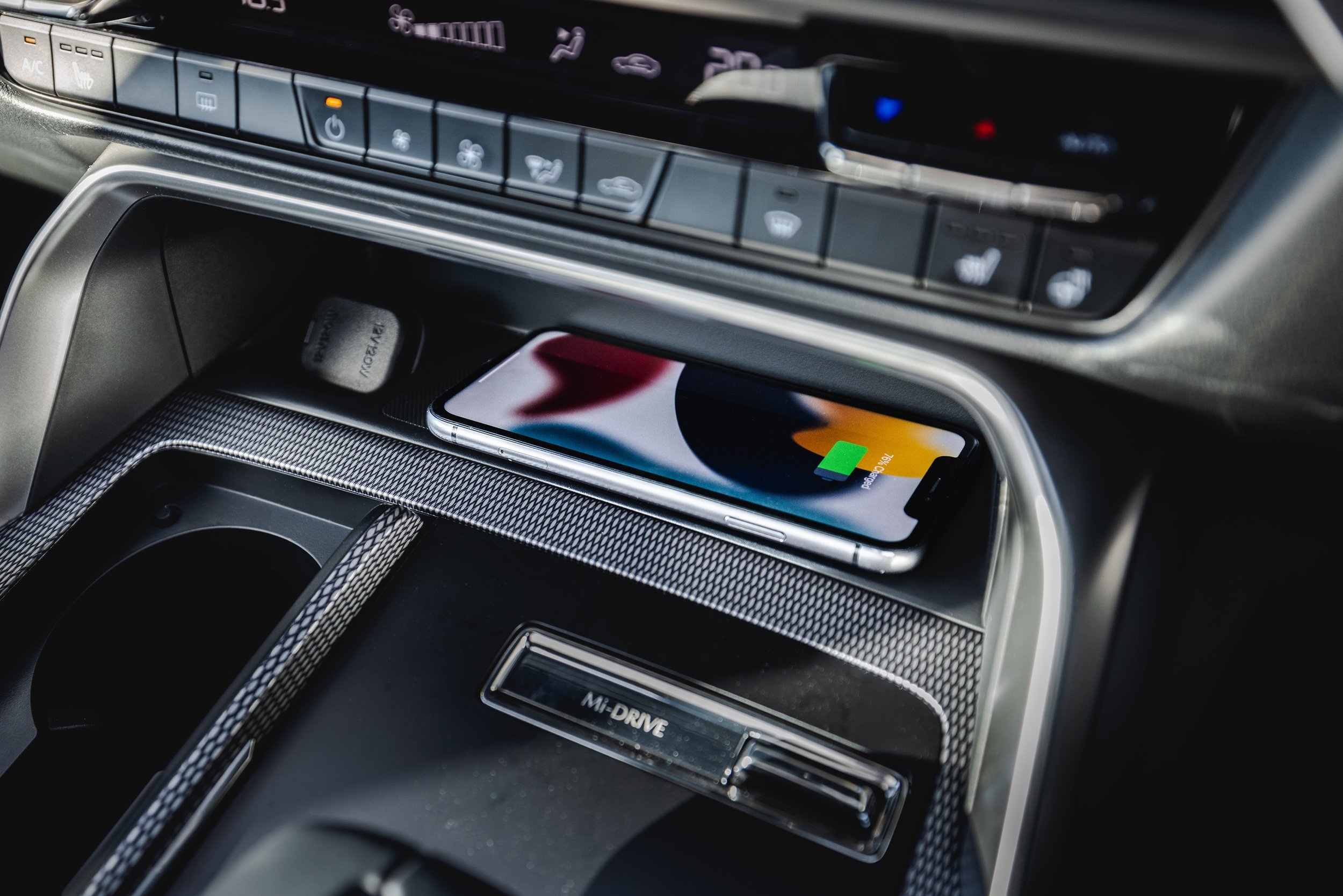
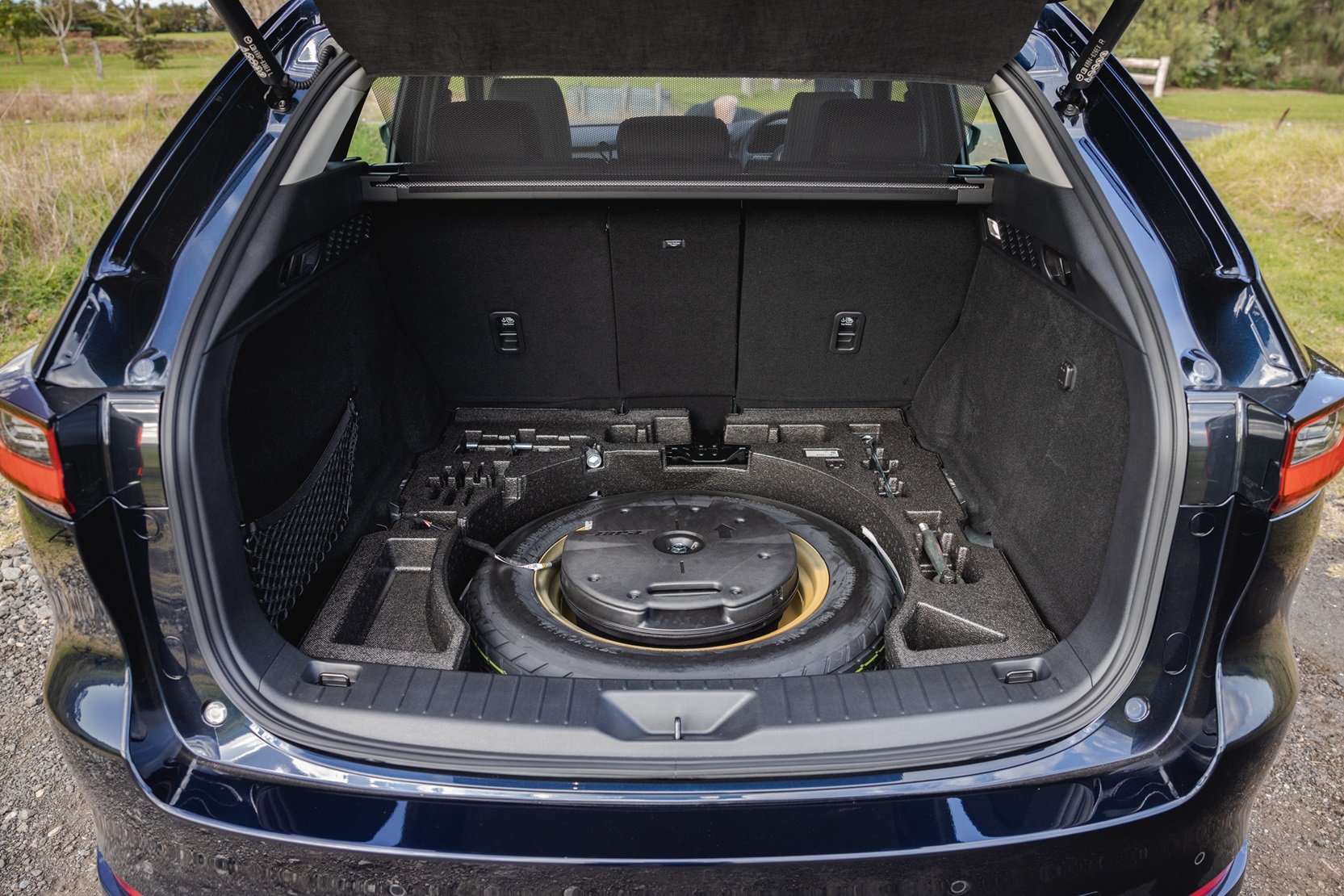

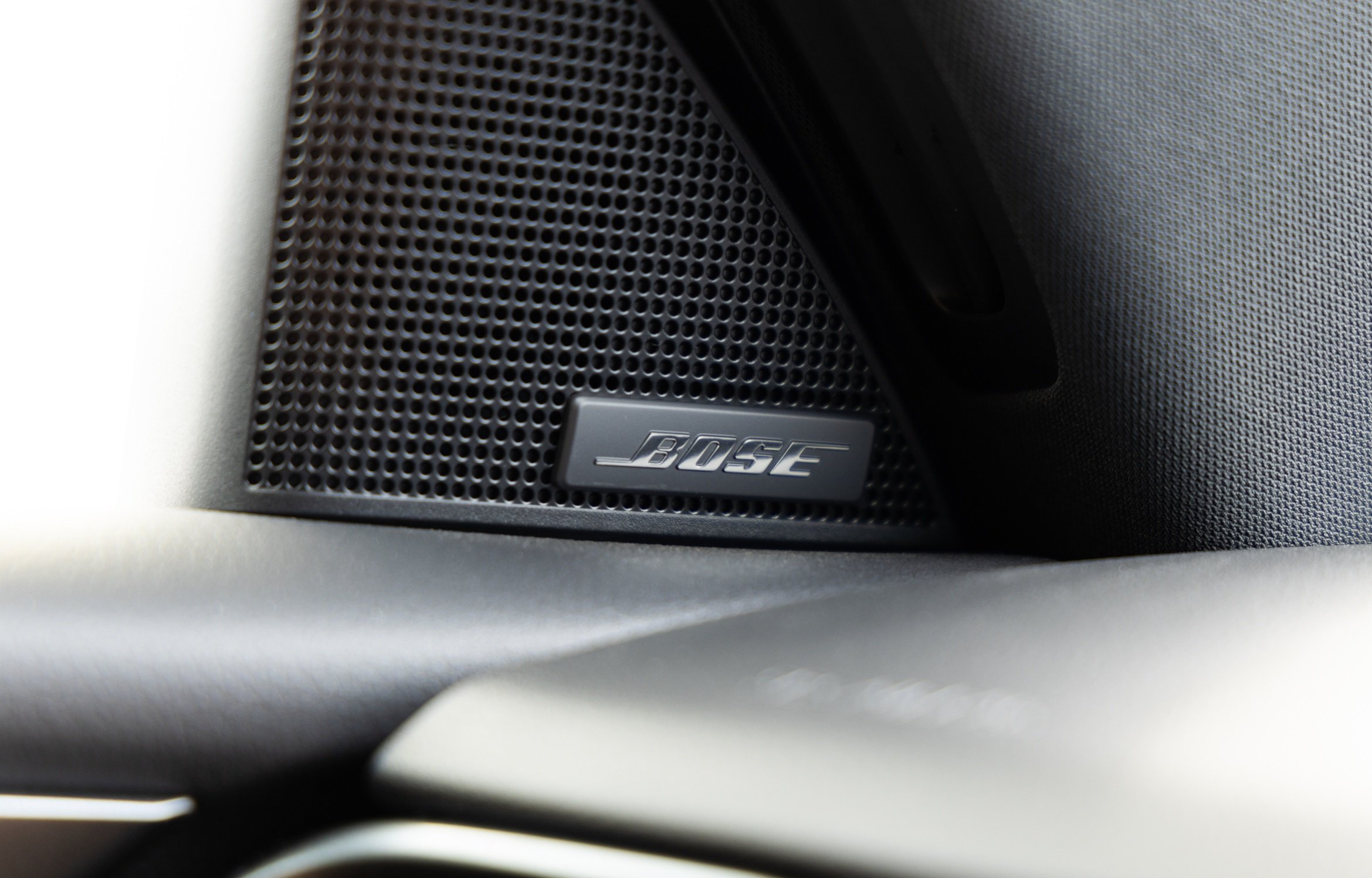
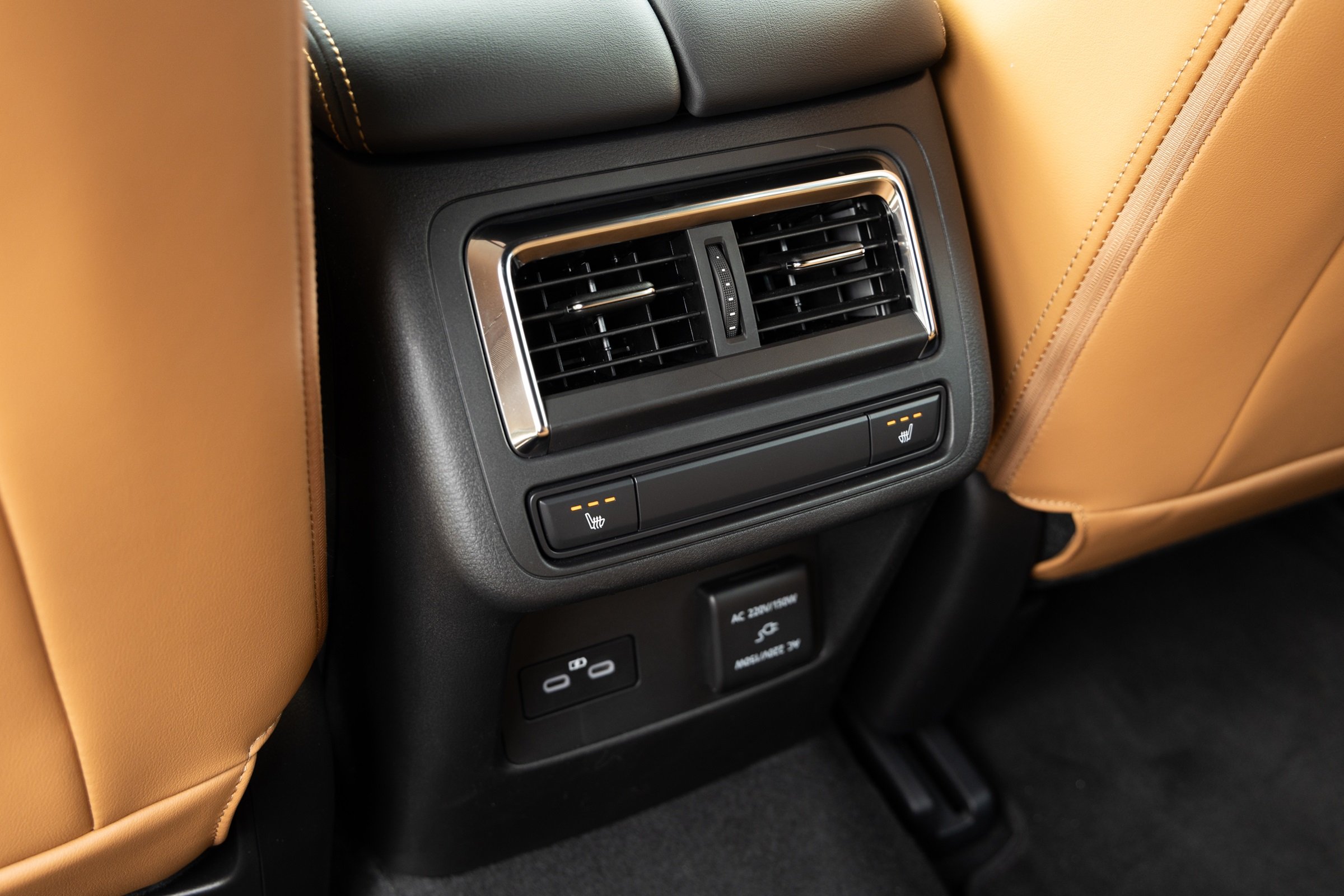

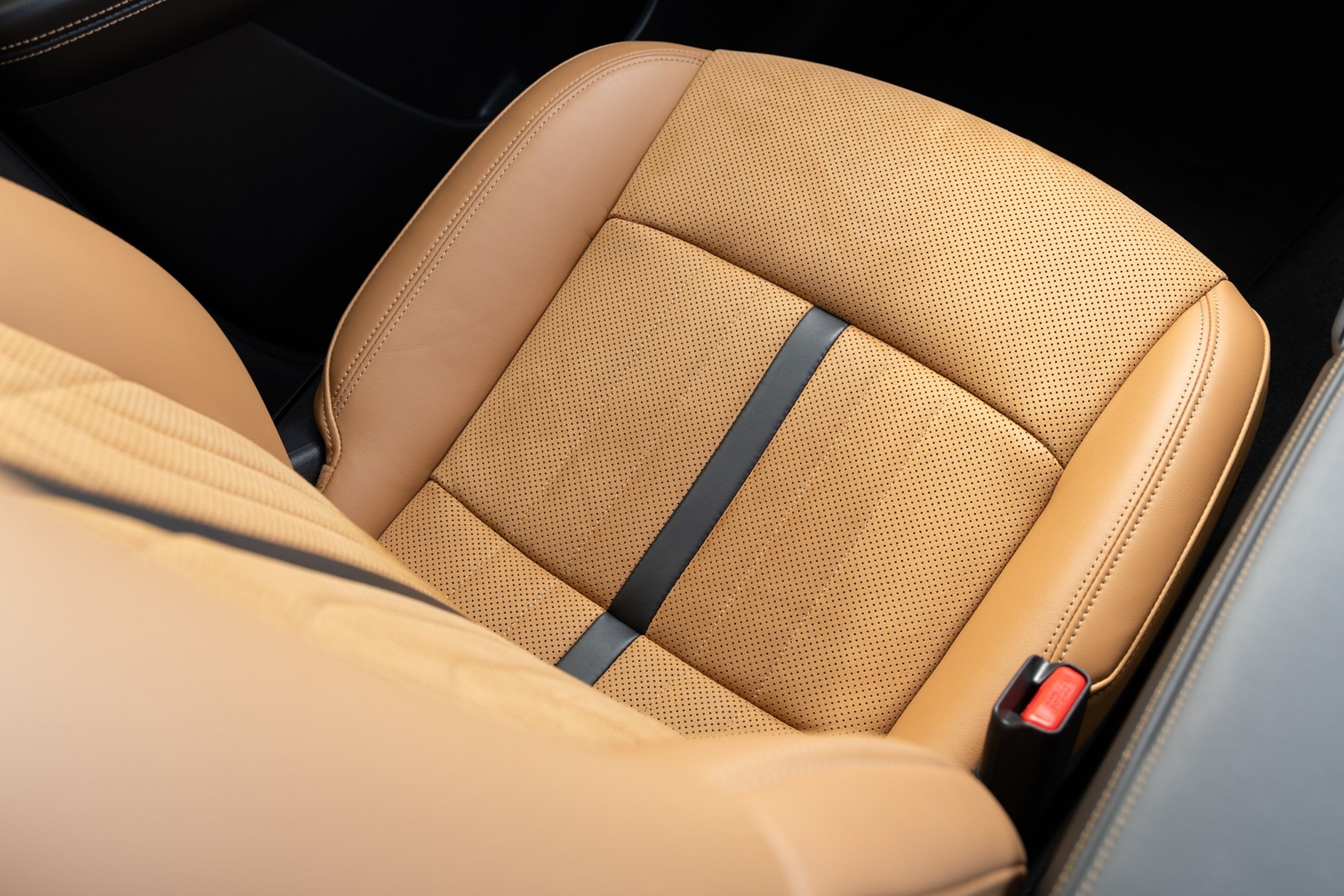
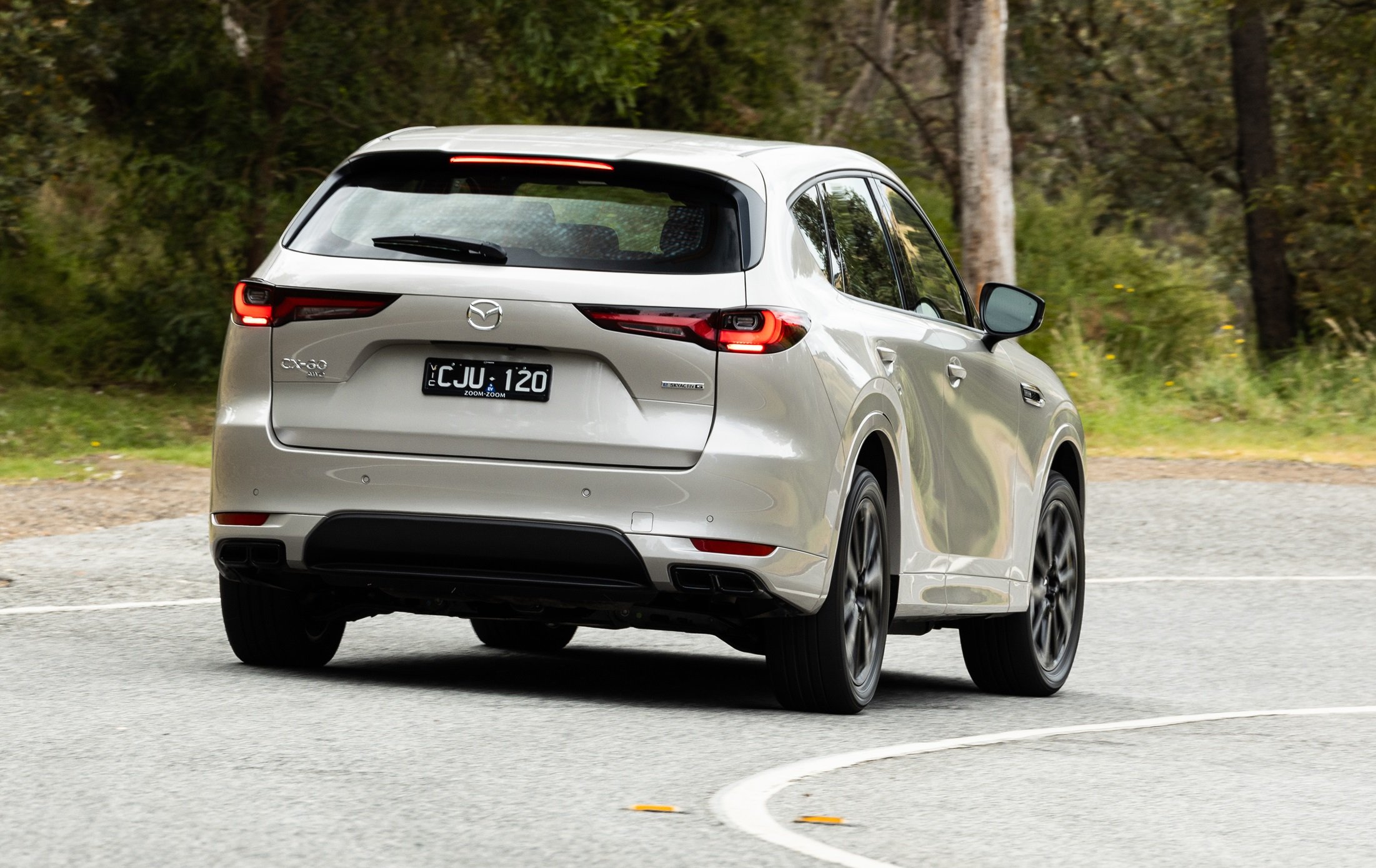

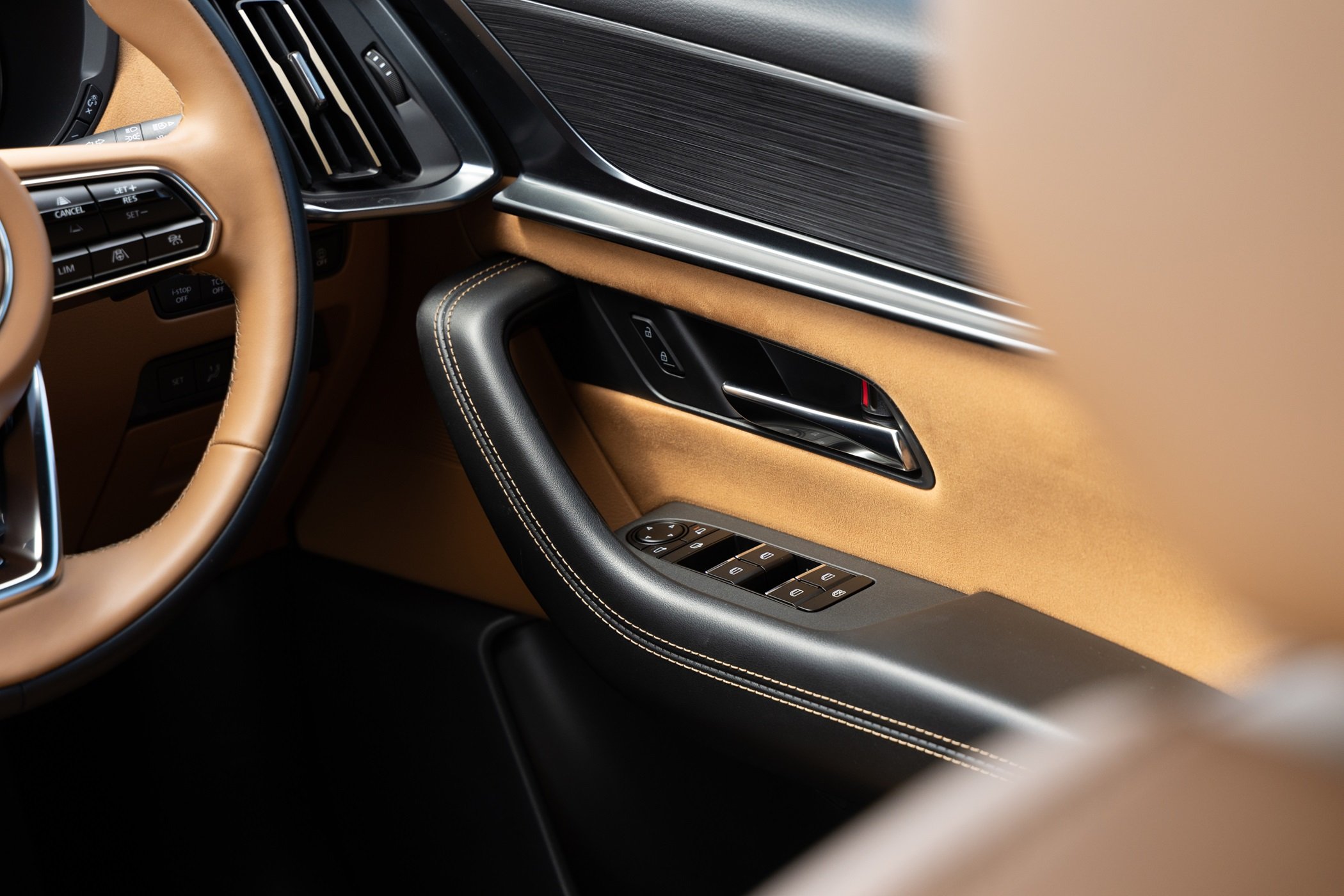

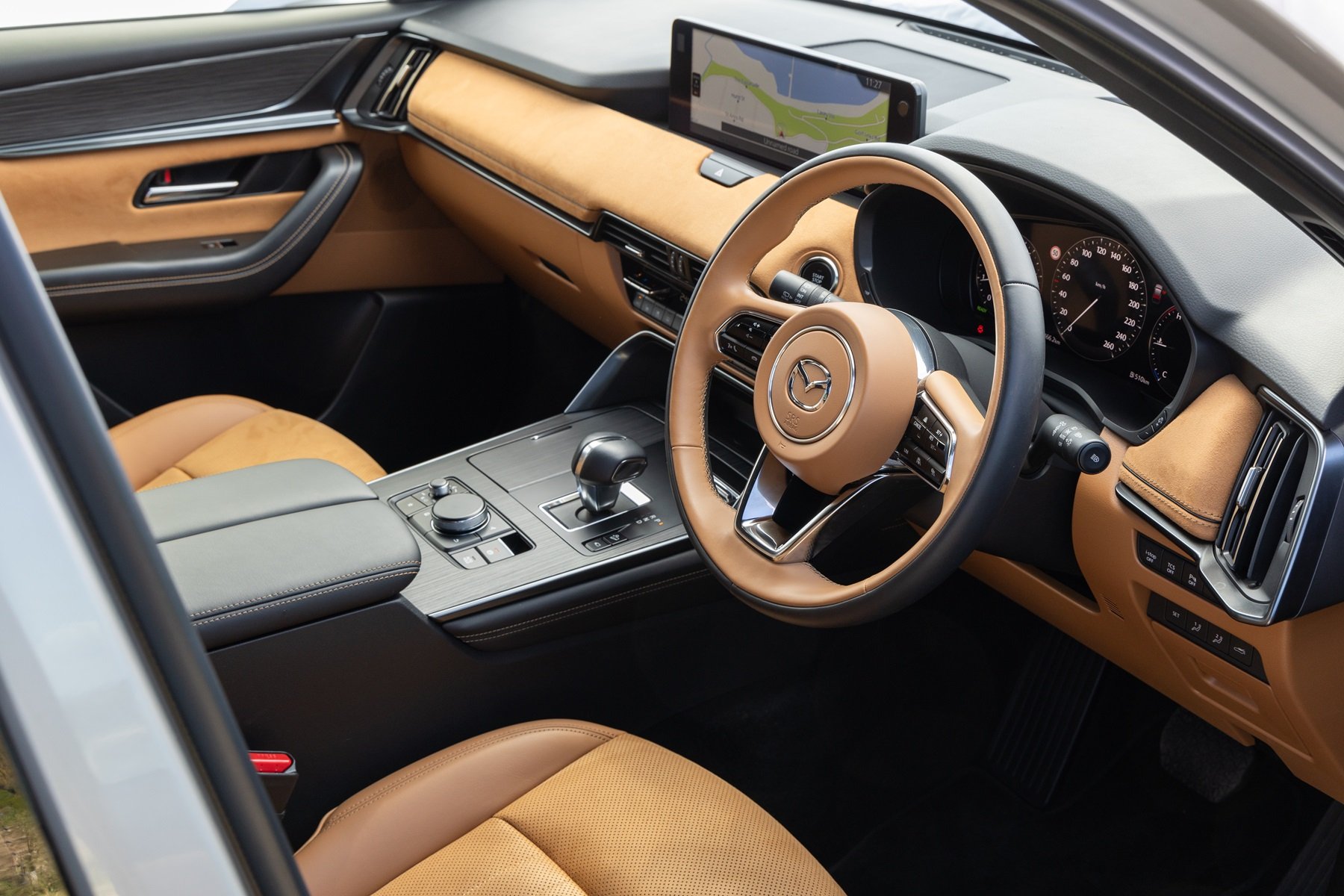

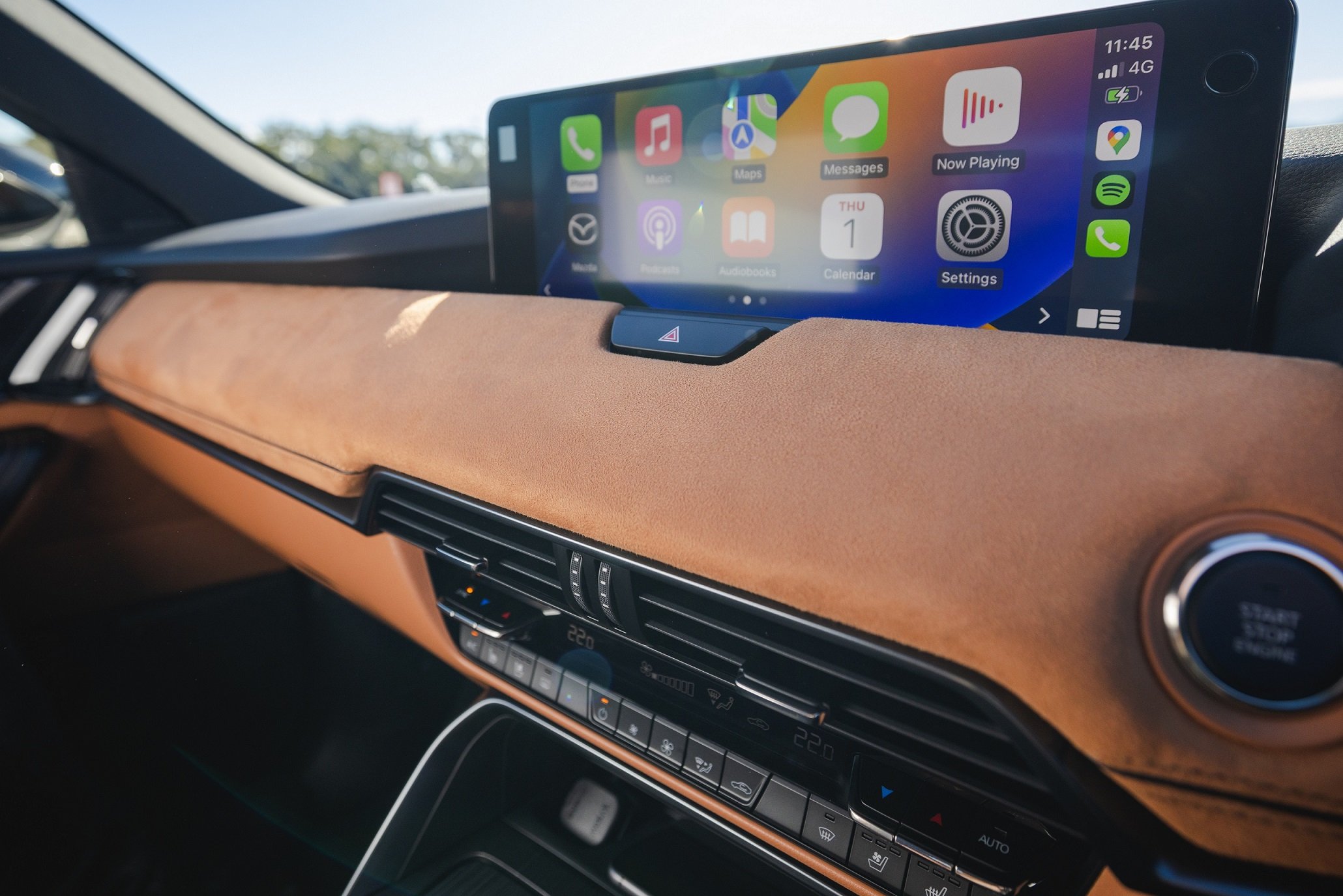


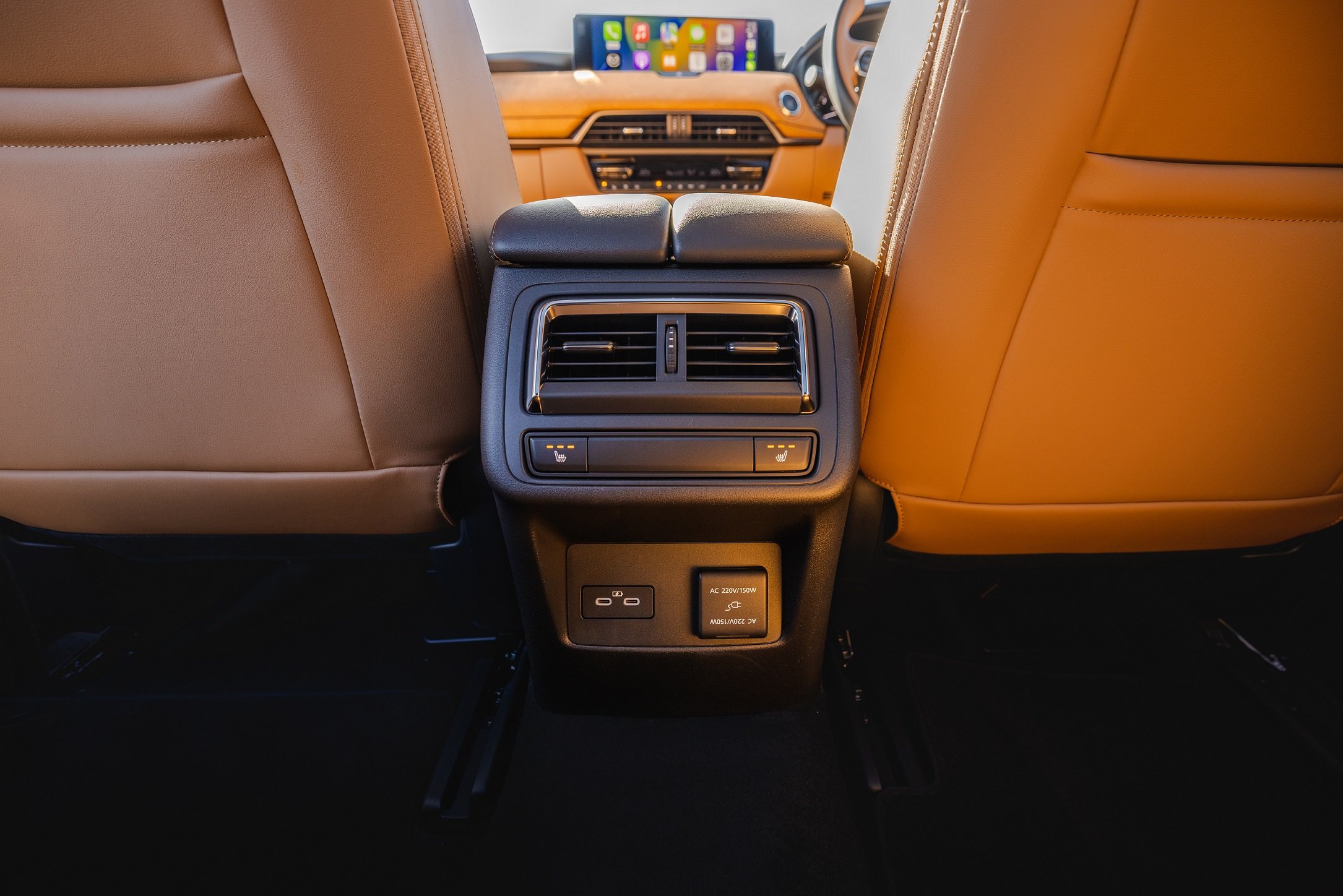
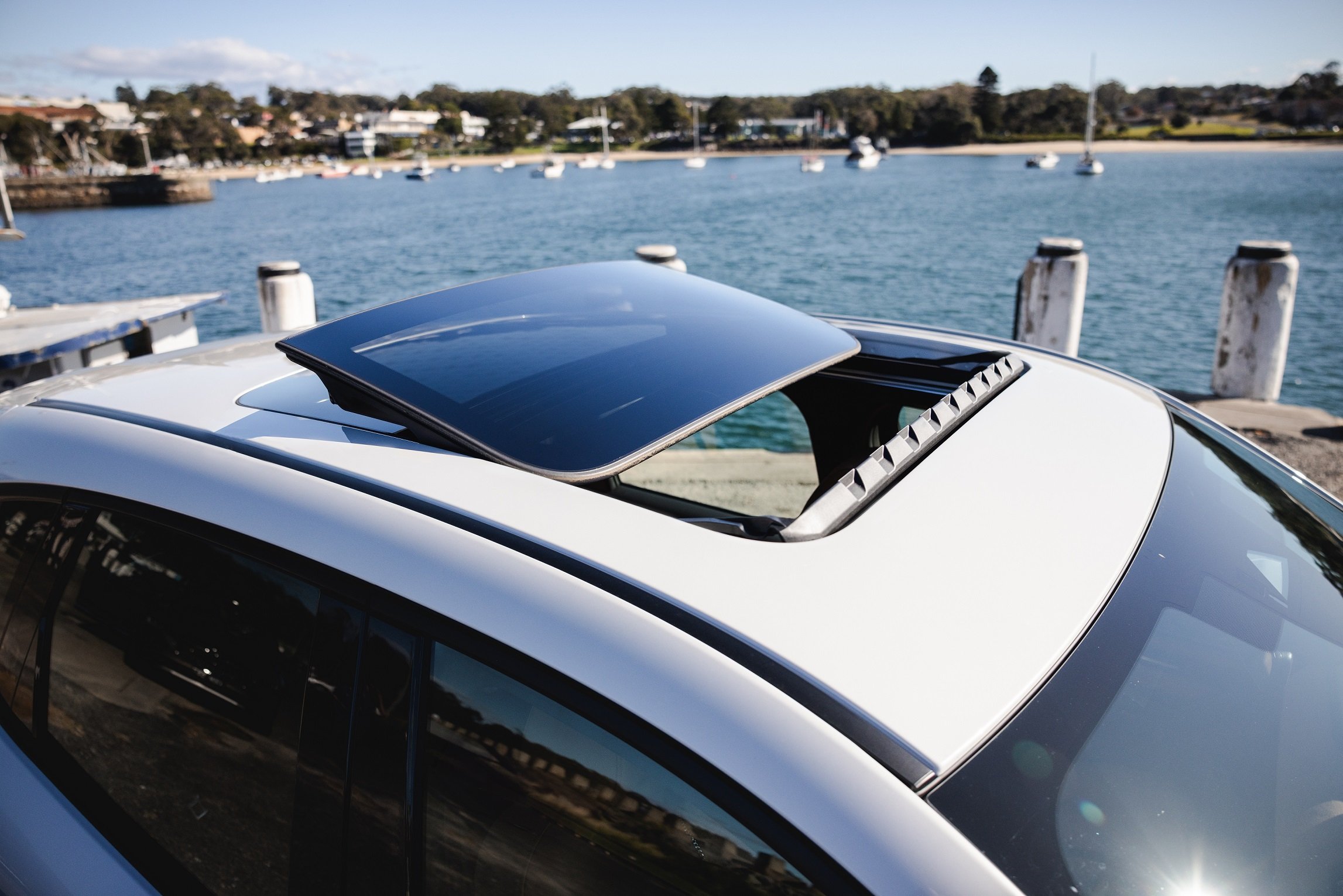
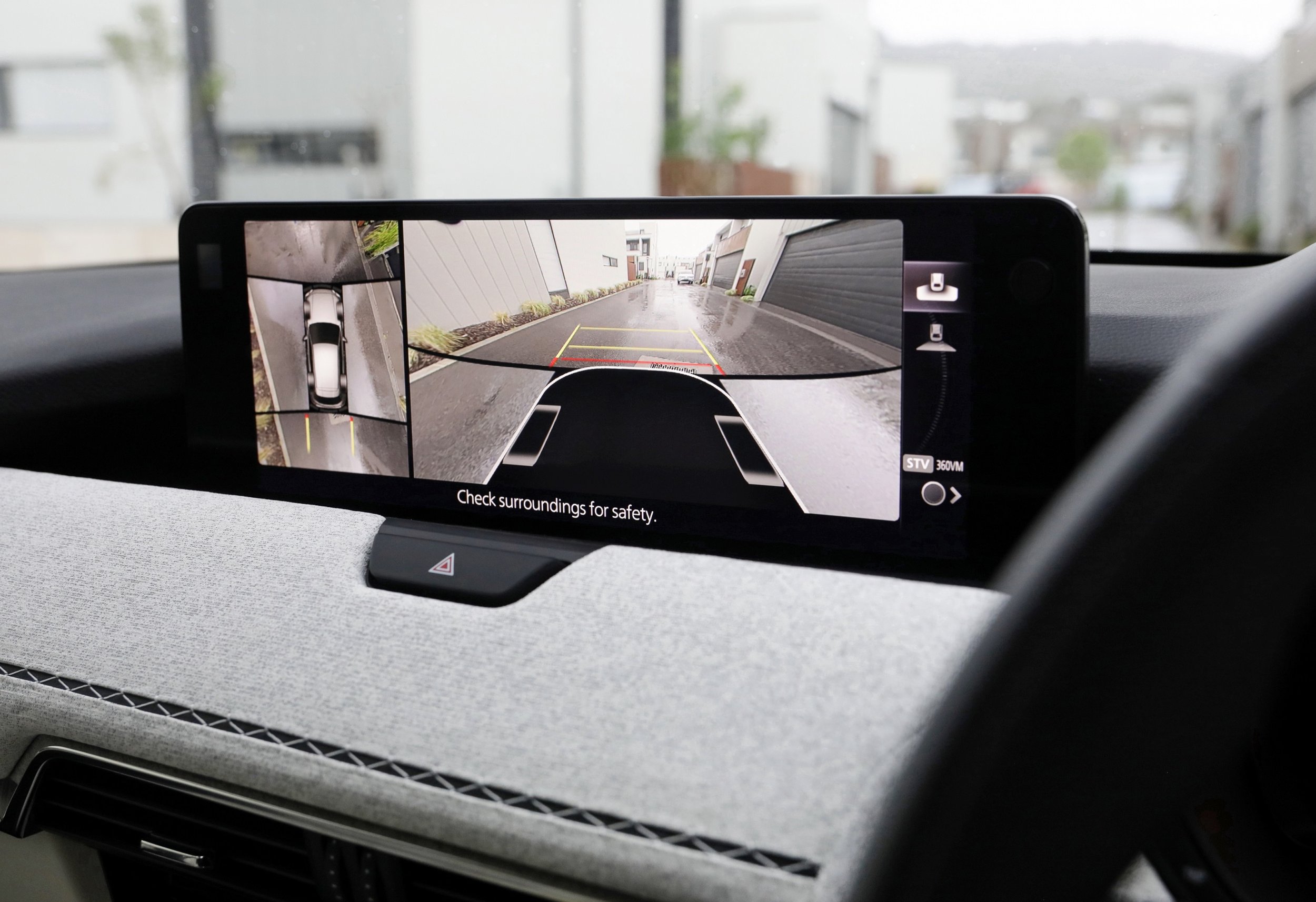

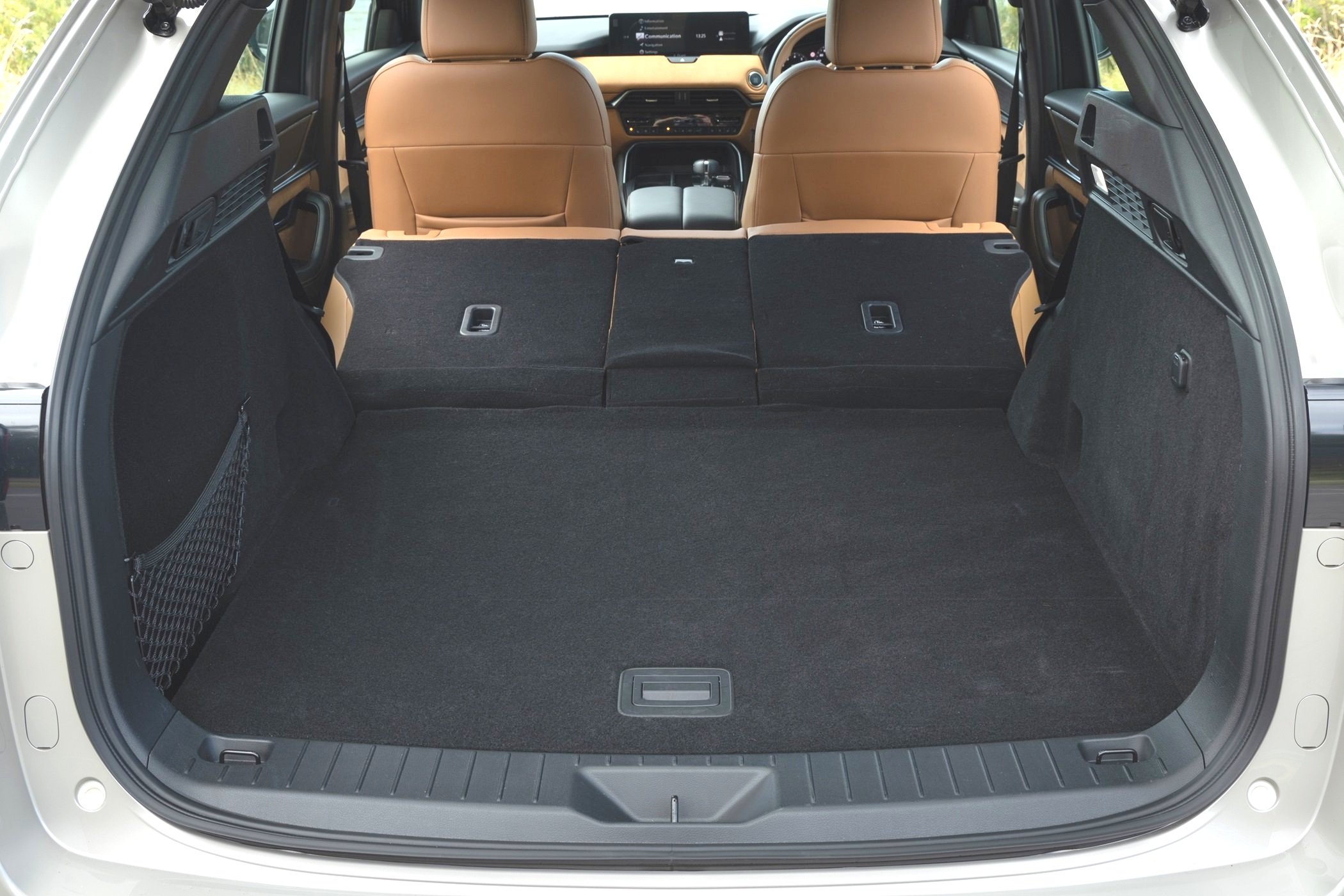
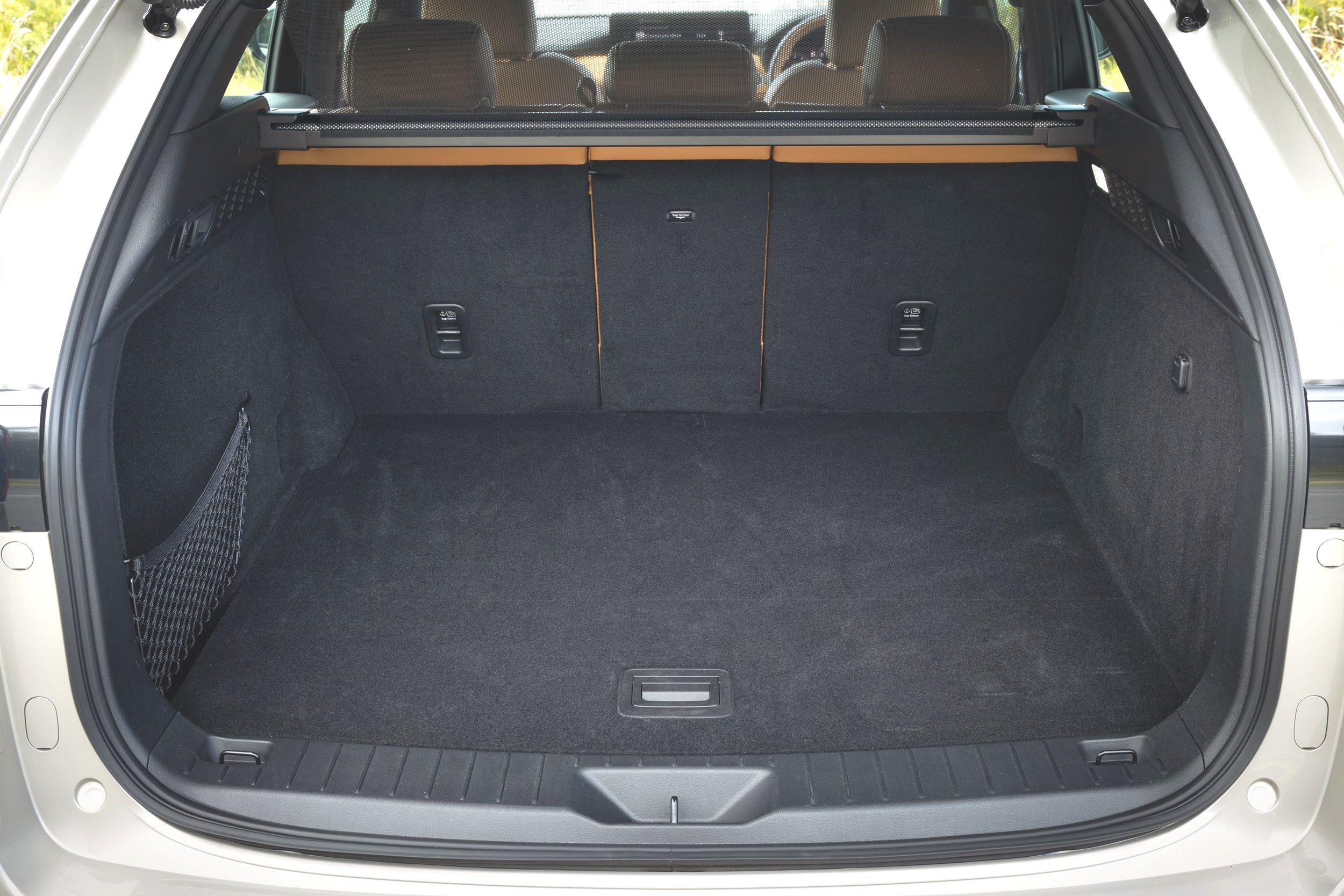

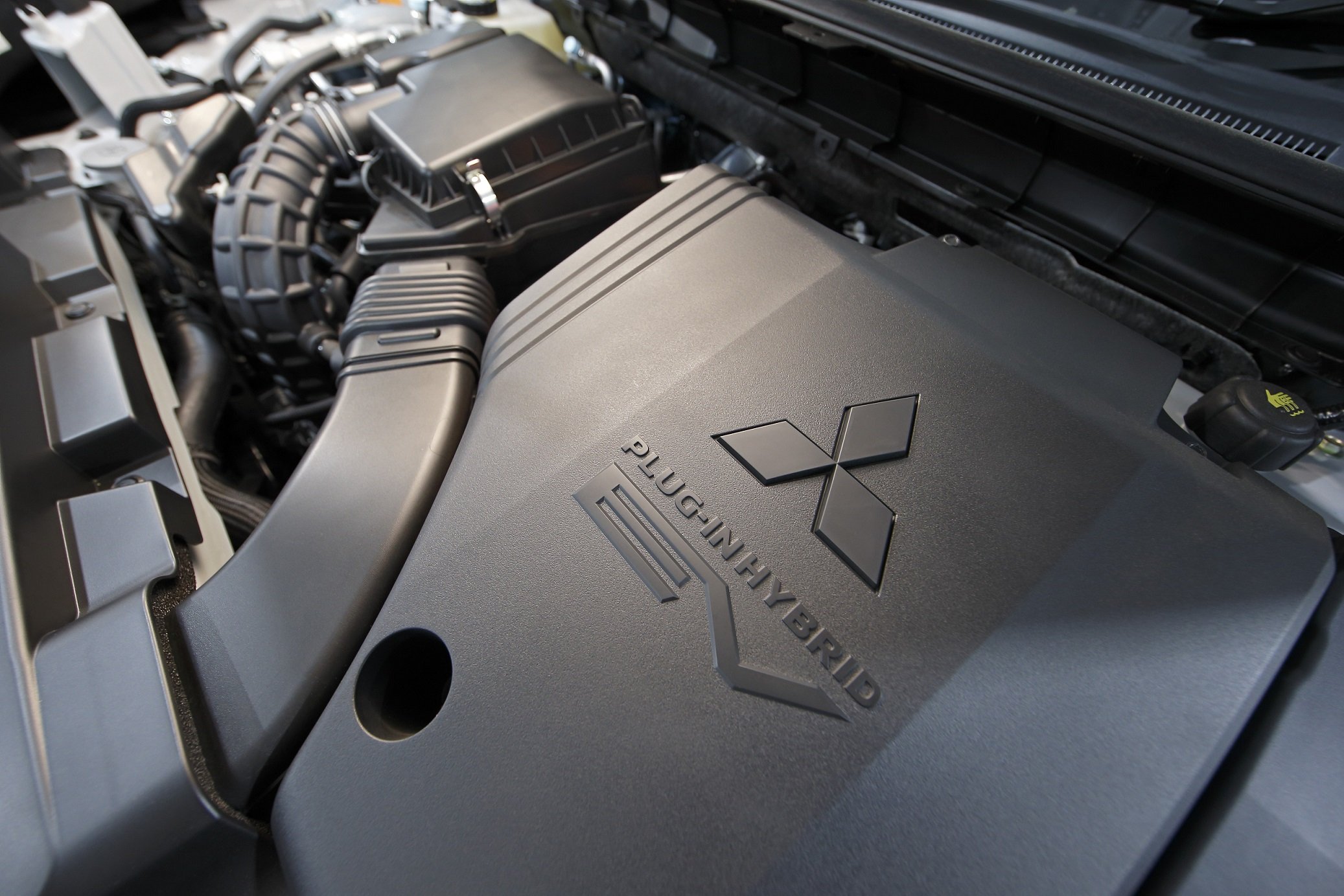
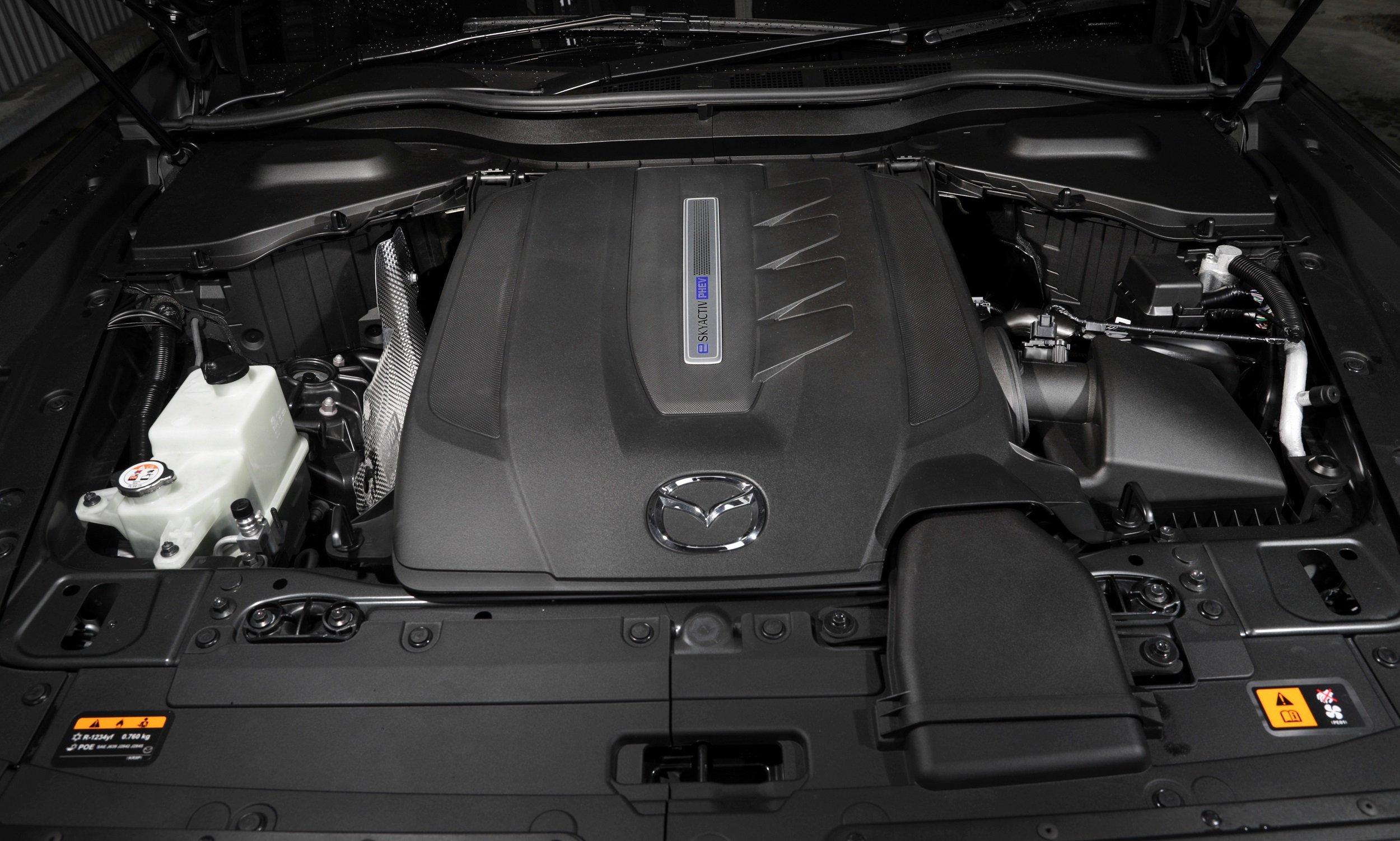




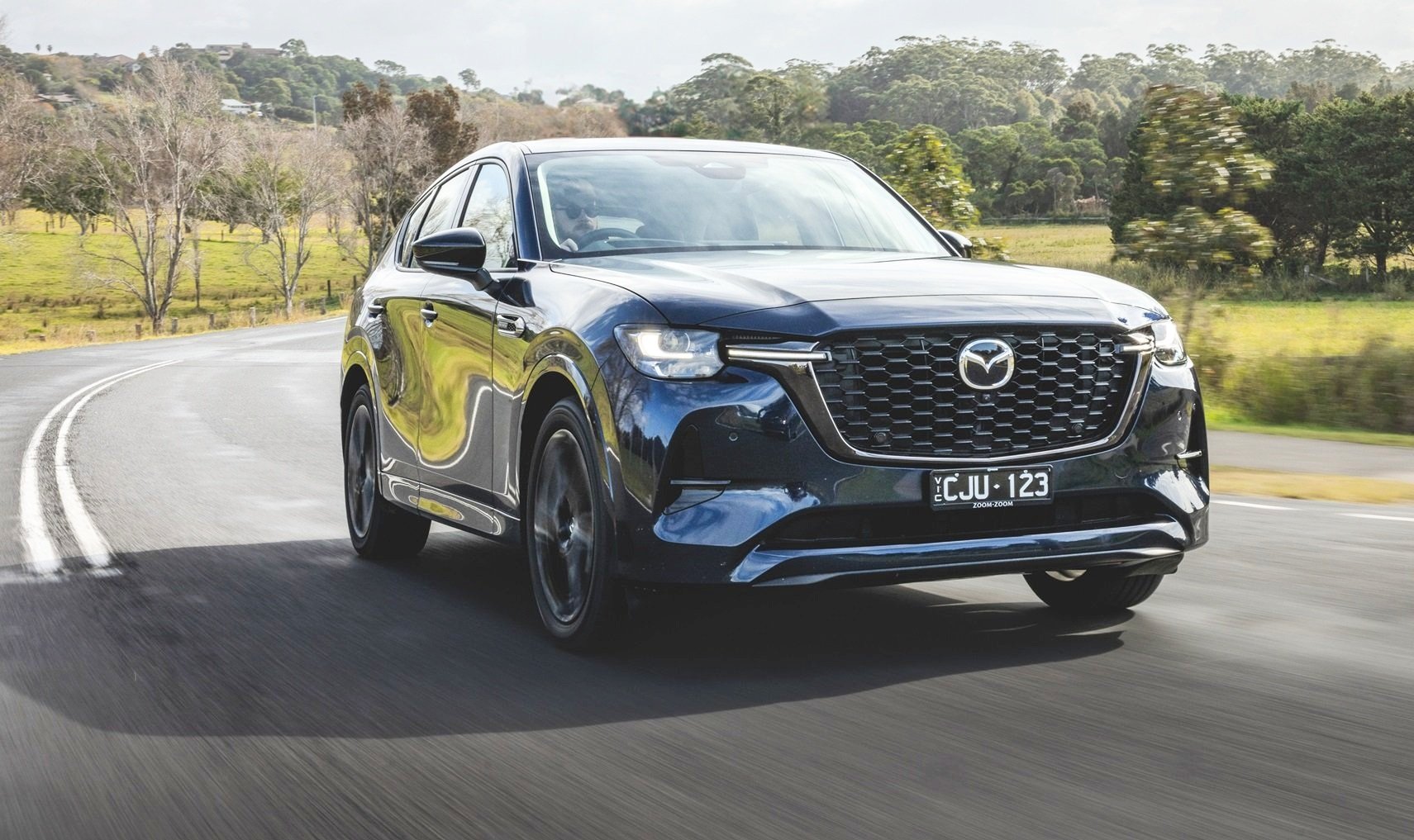

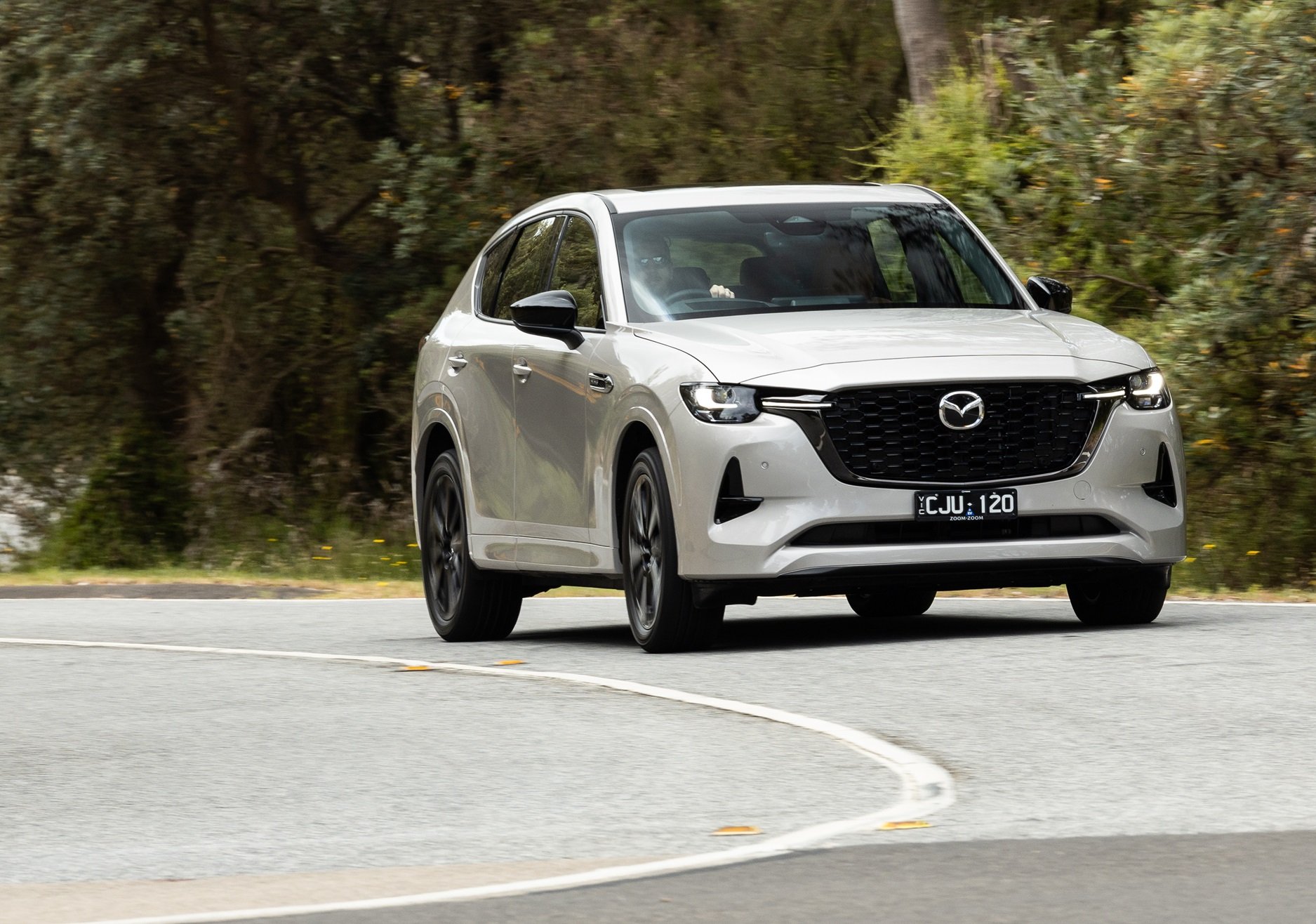
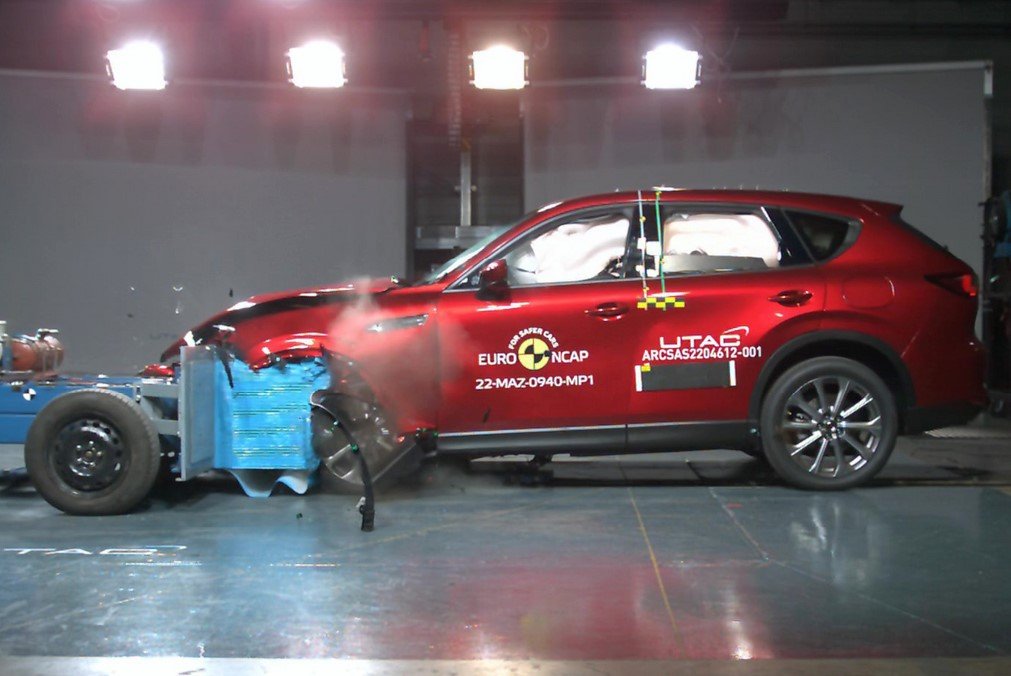

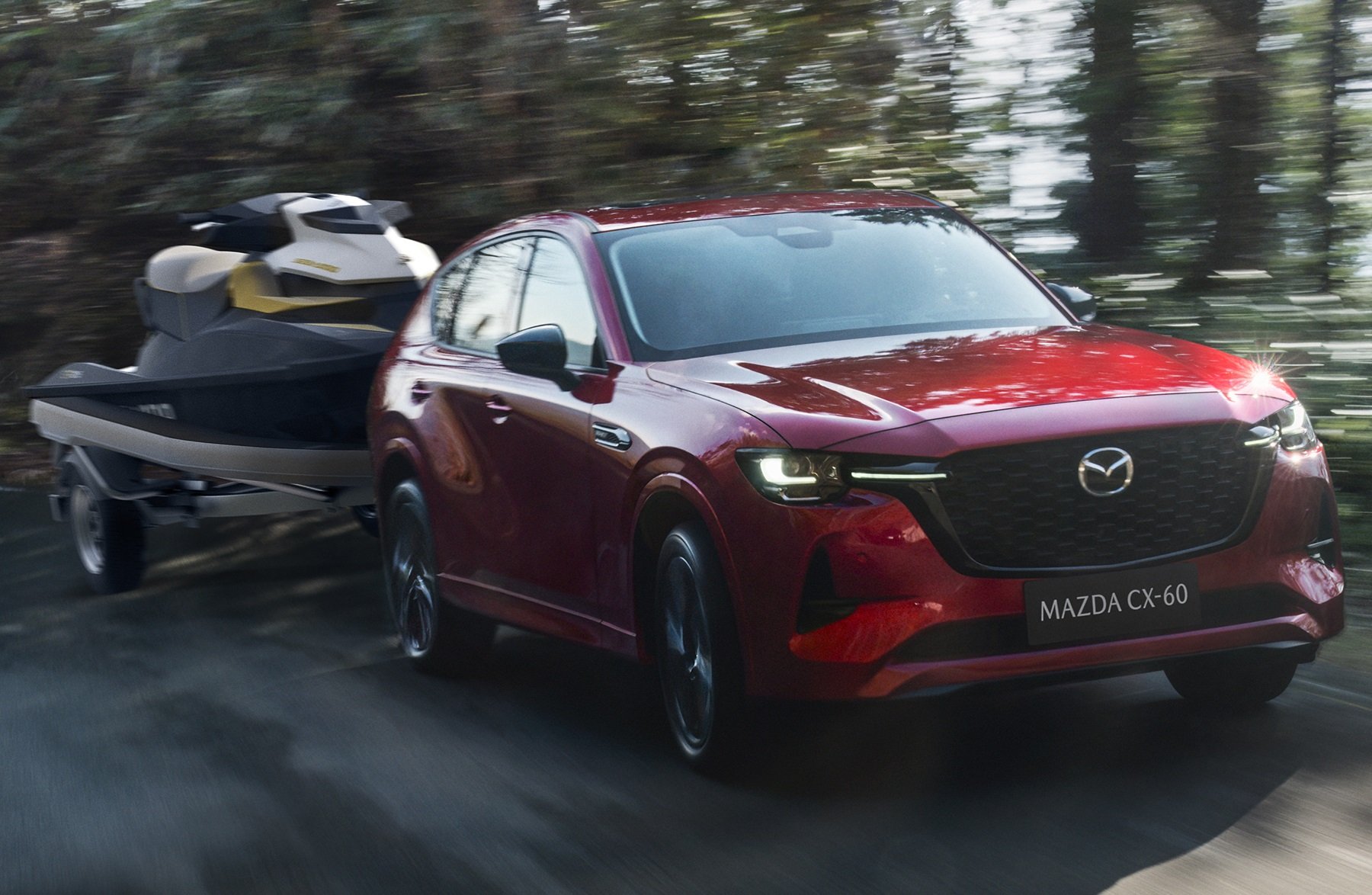
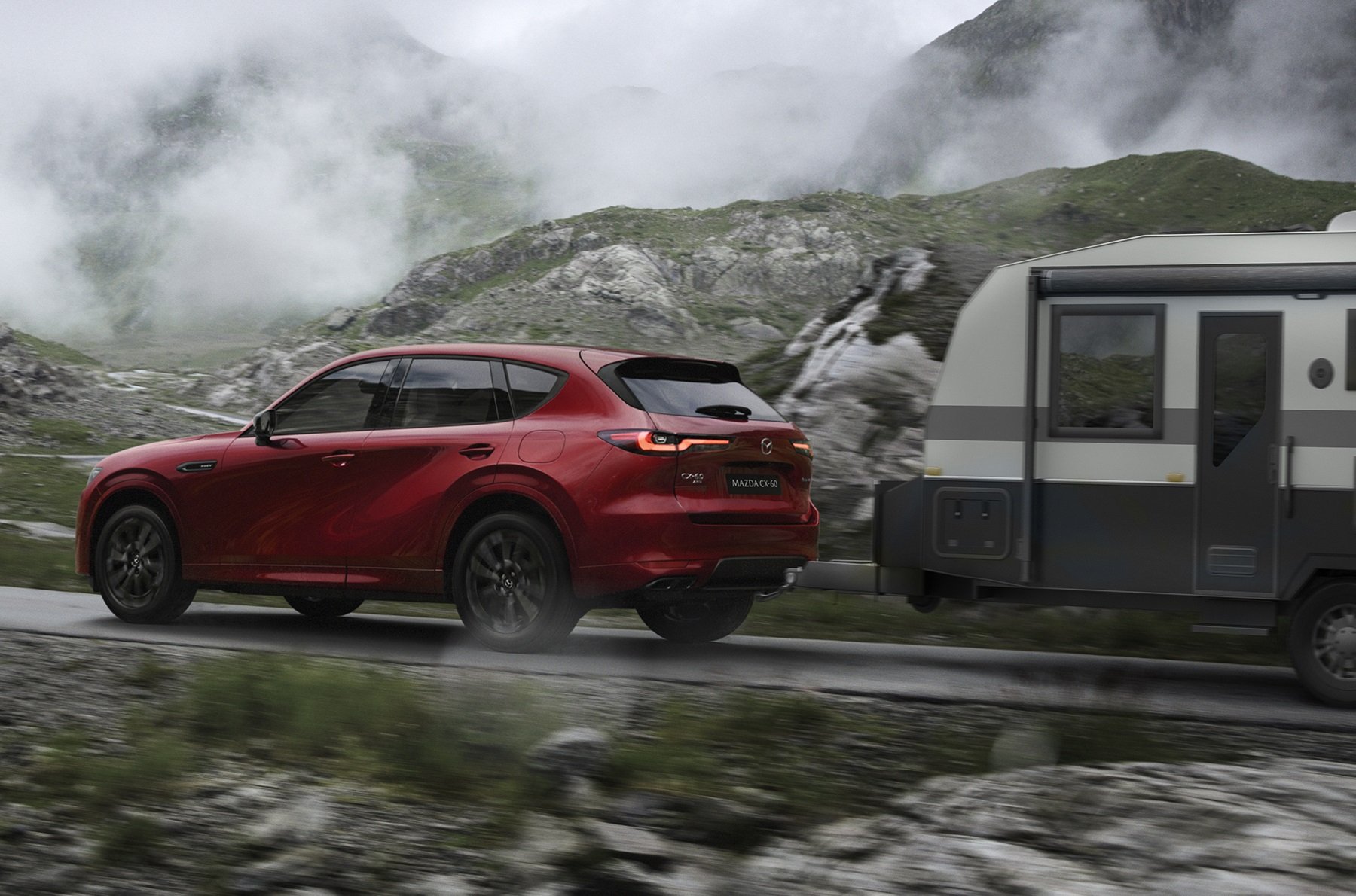

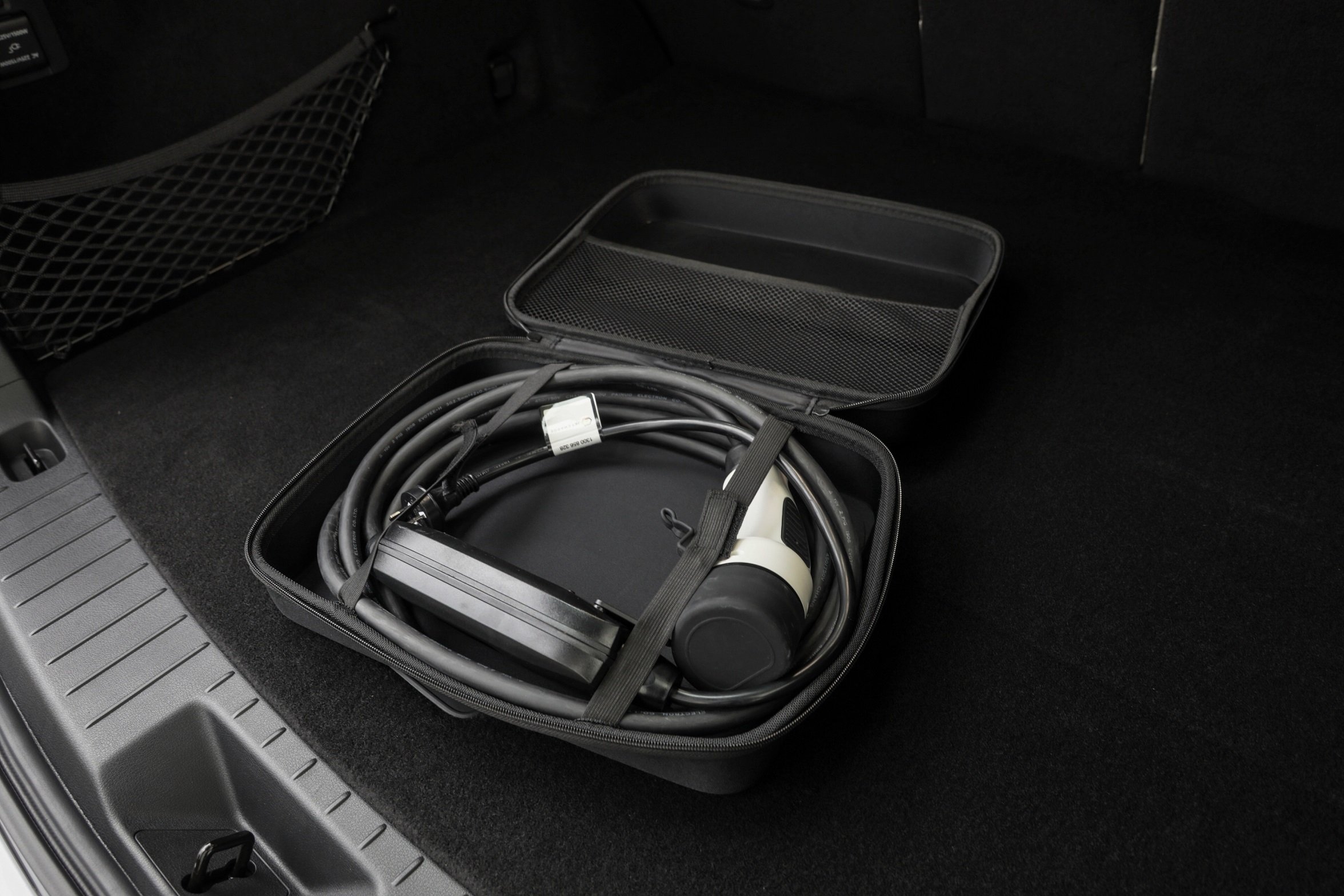












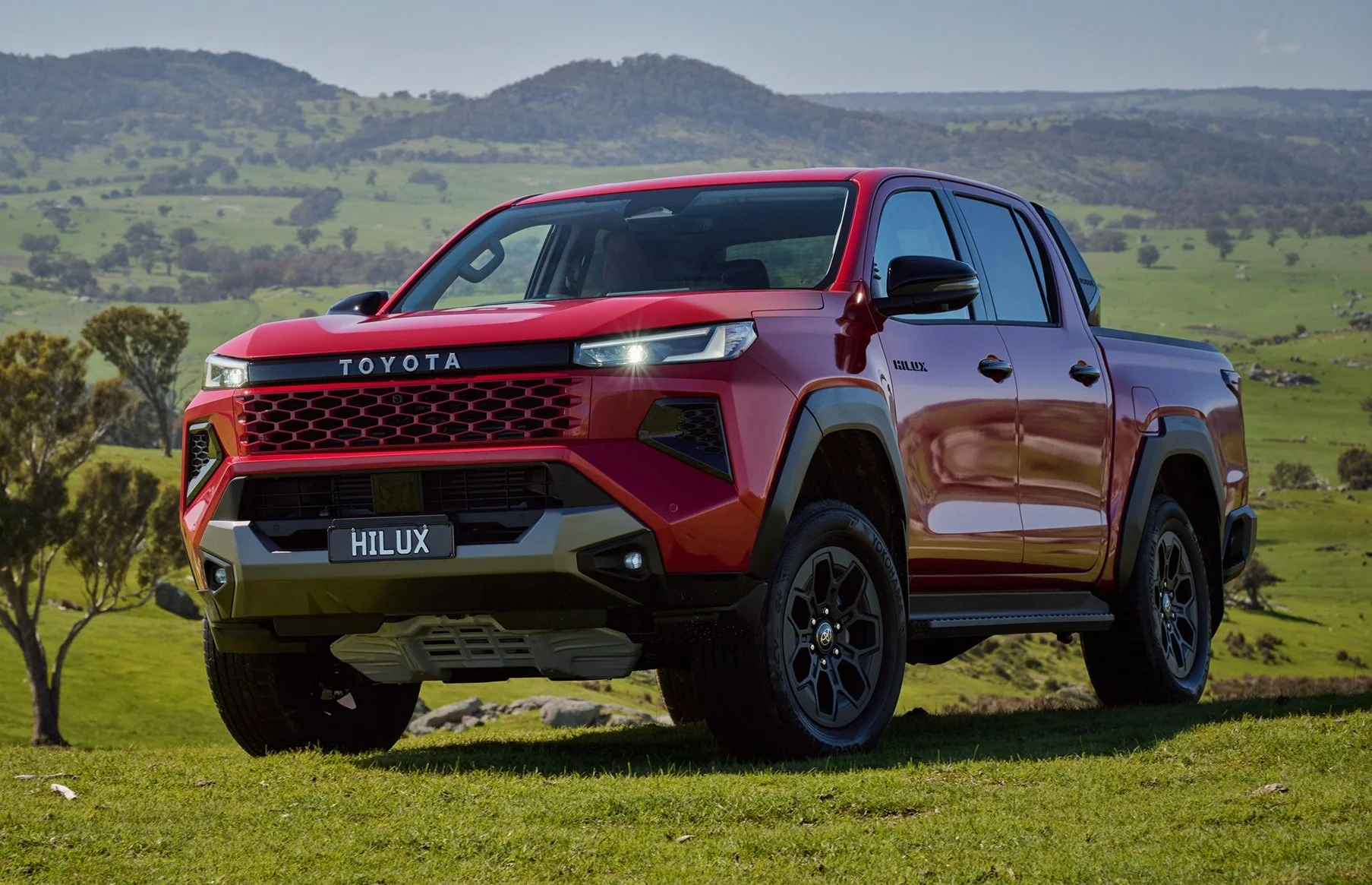




The Mitsubishi Outlander is an excellent-value seven-seat family vehicle with plenty of features and capability. It looks modern and tough, but you need to know if it’s going to be good enough compared with other medium SUVs.